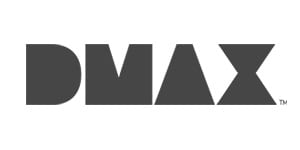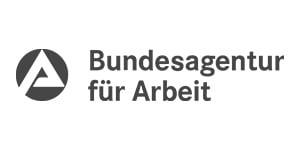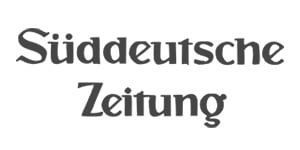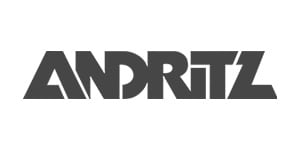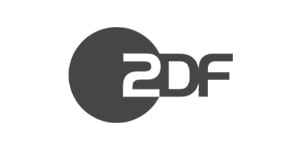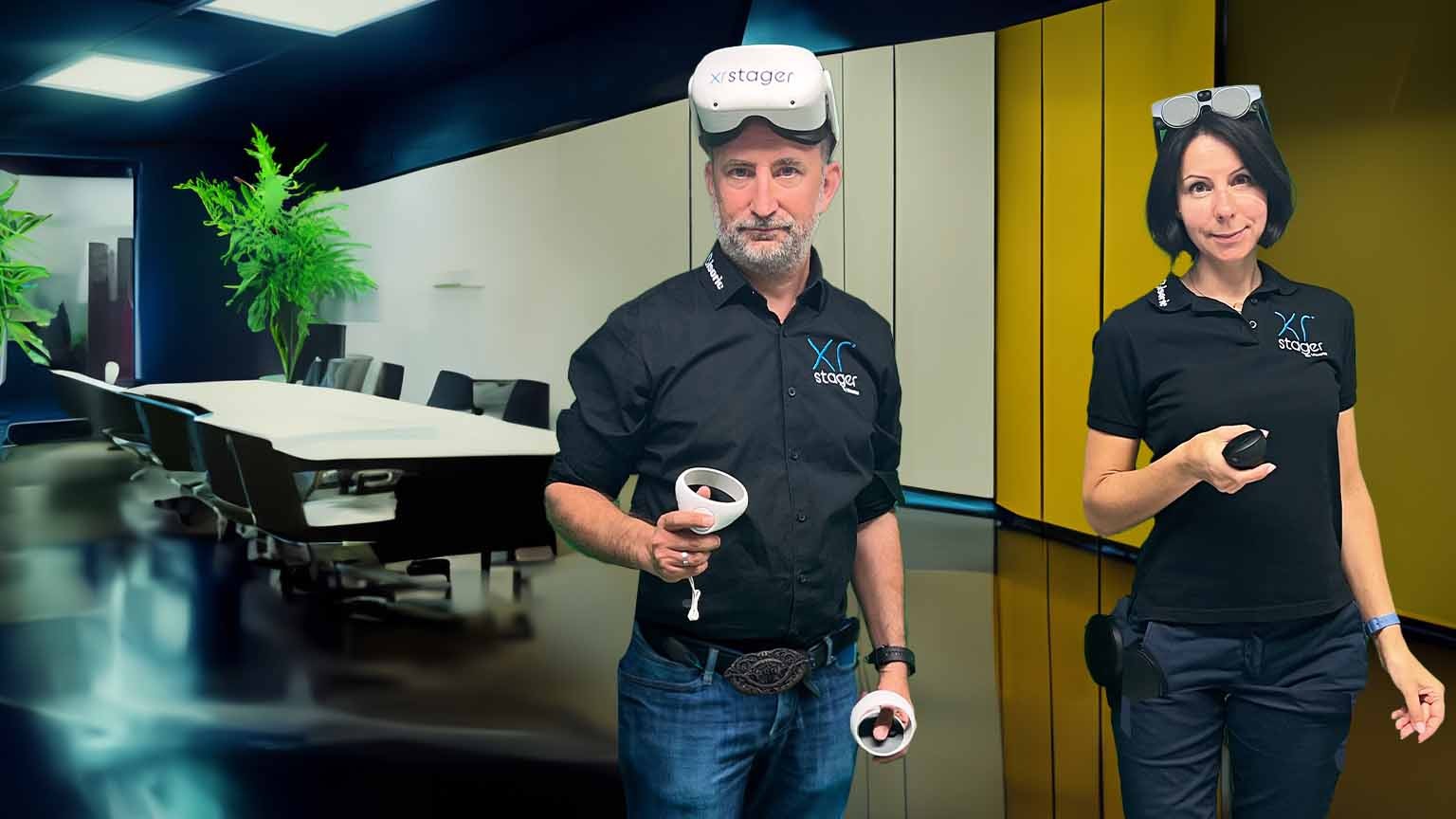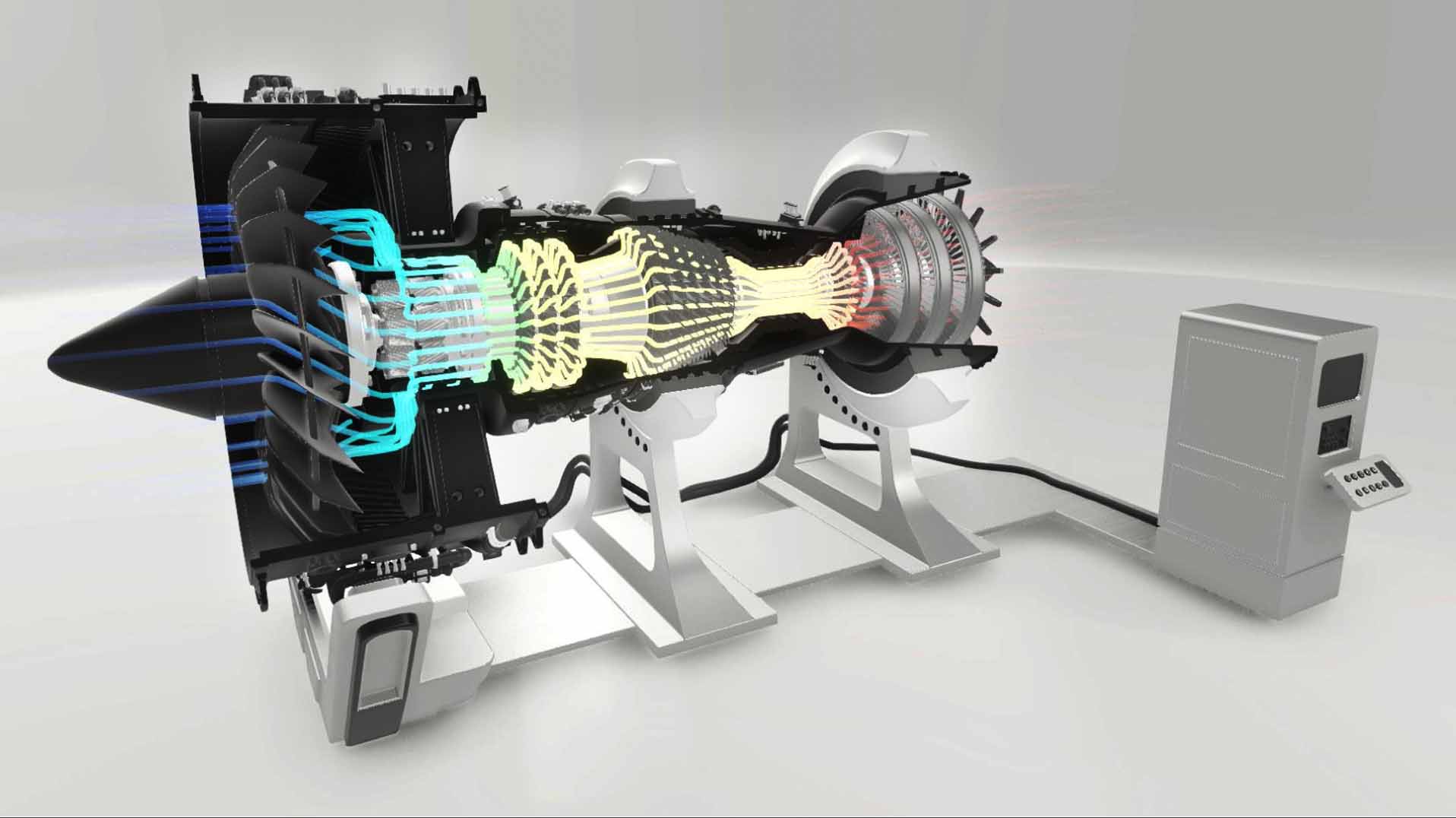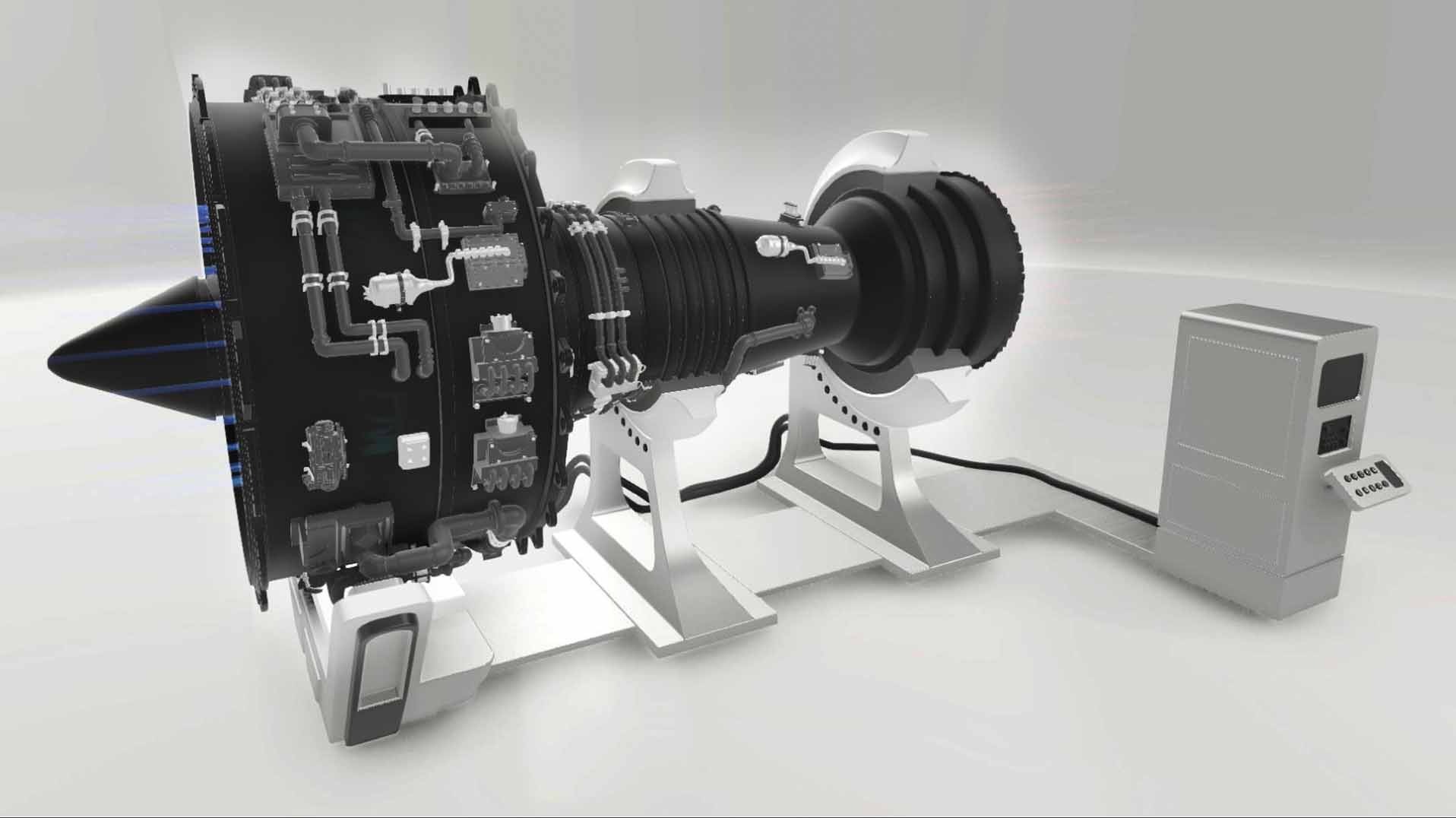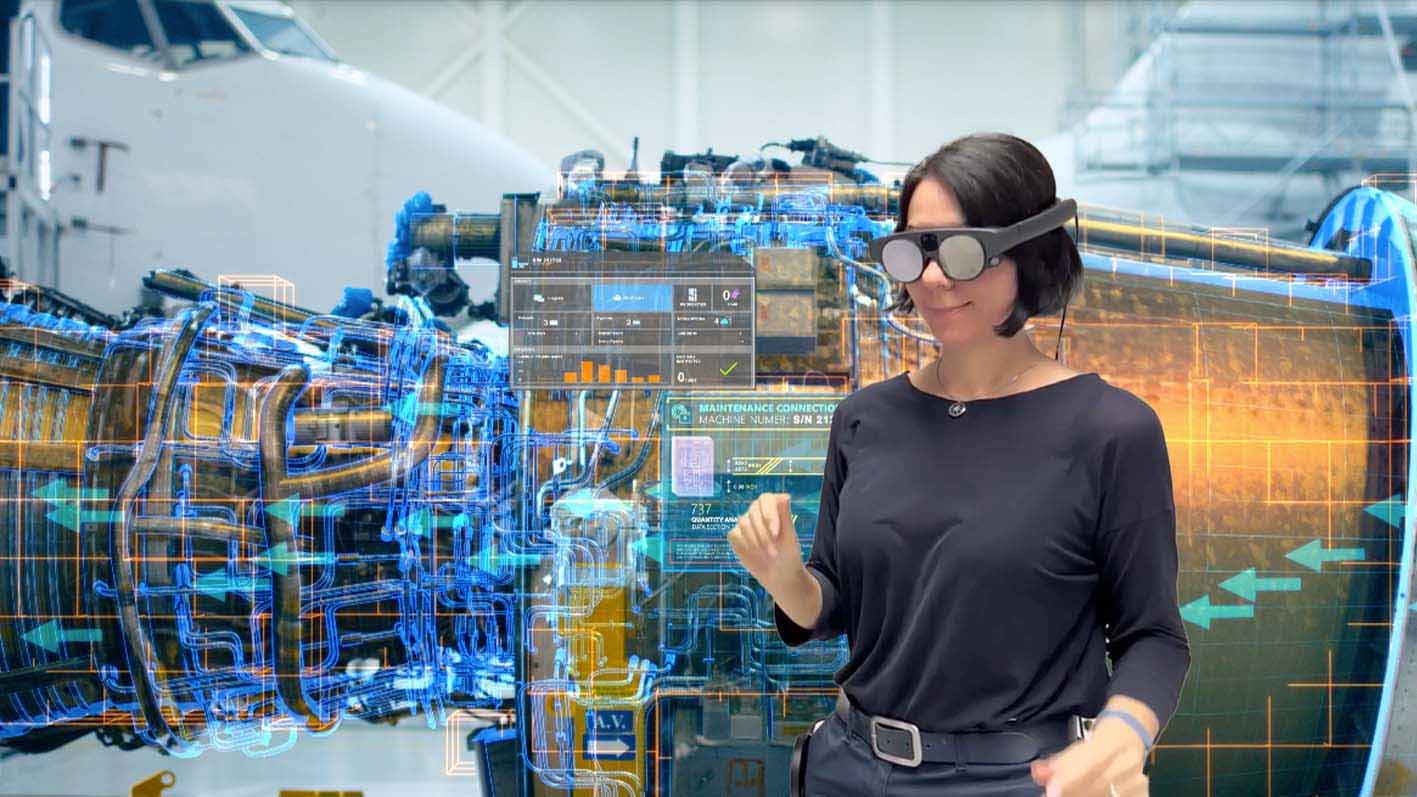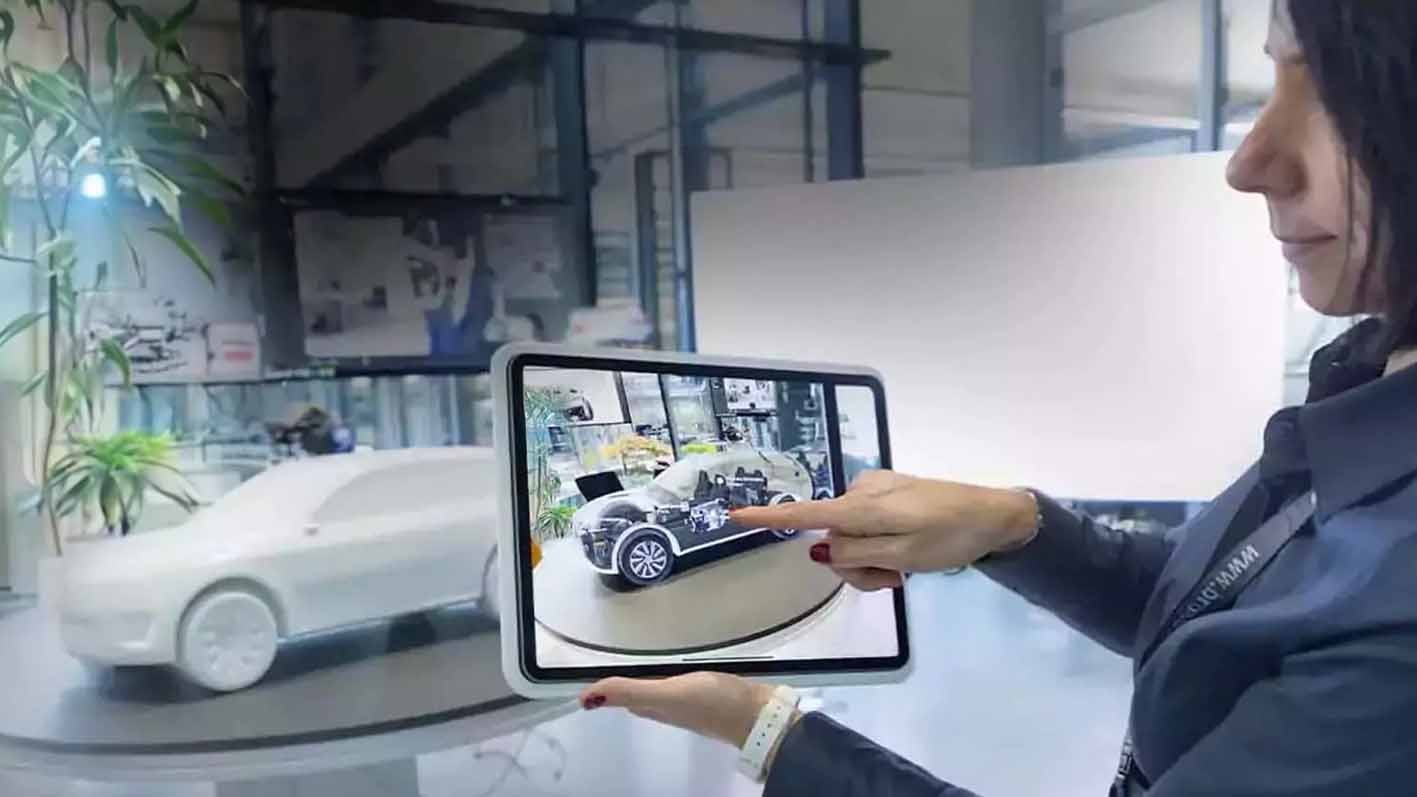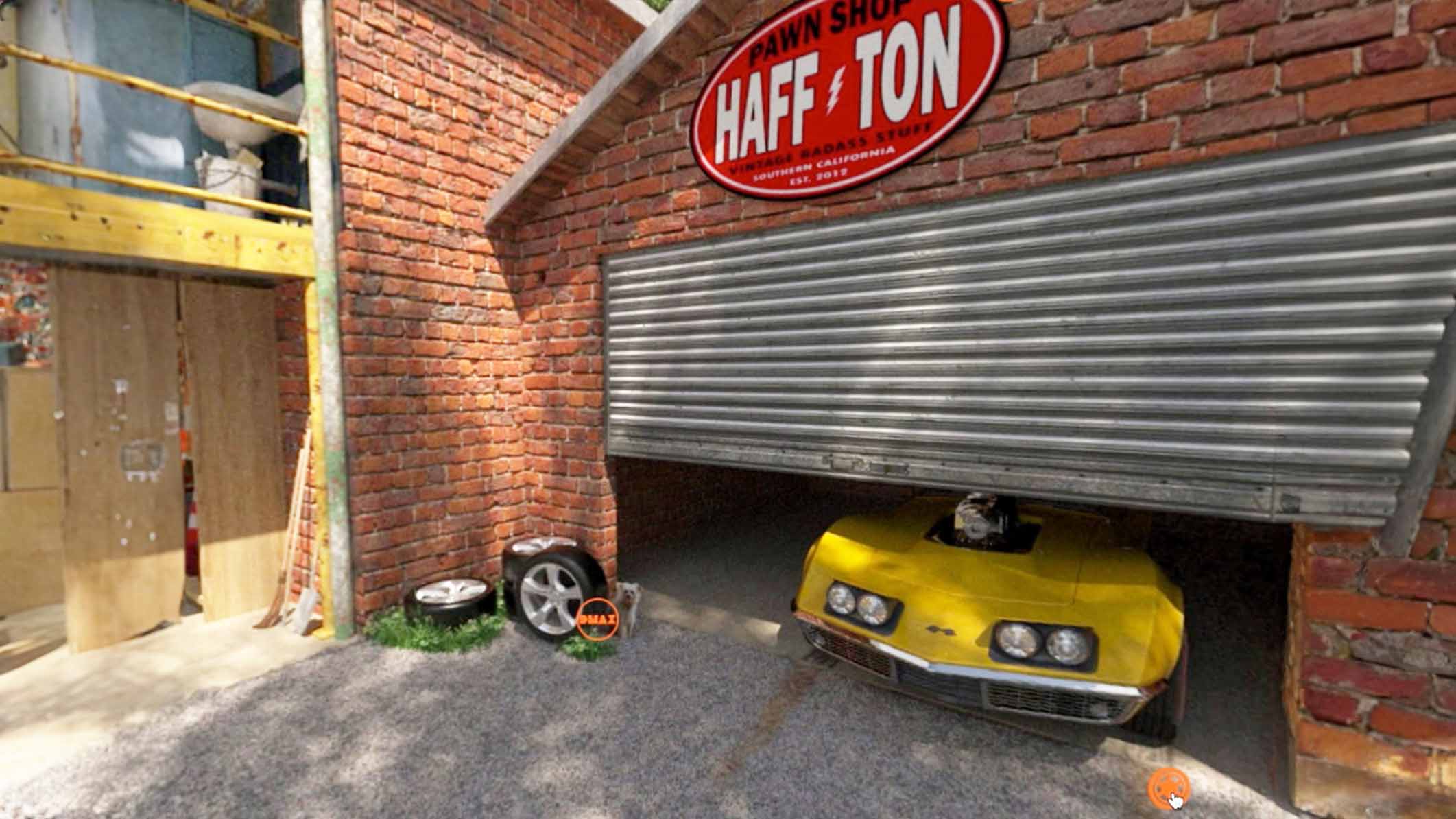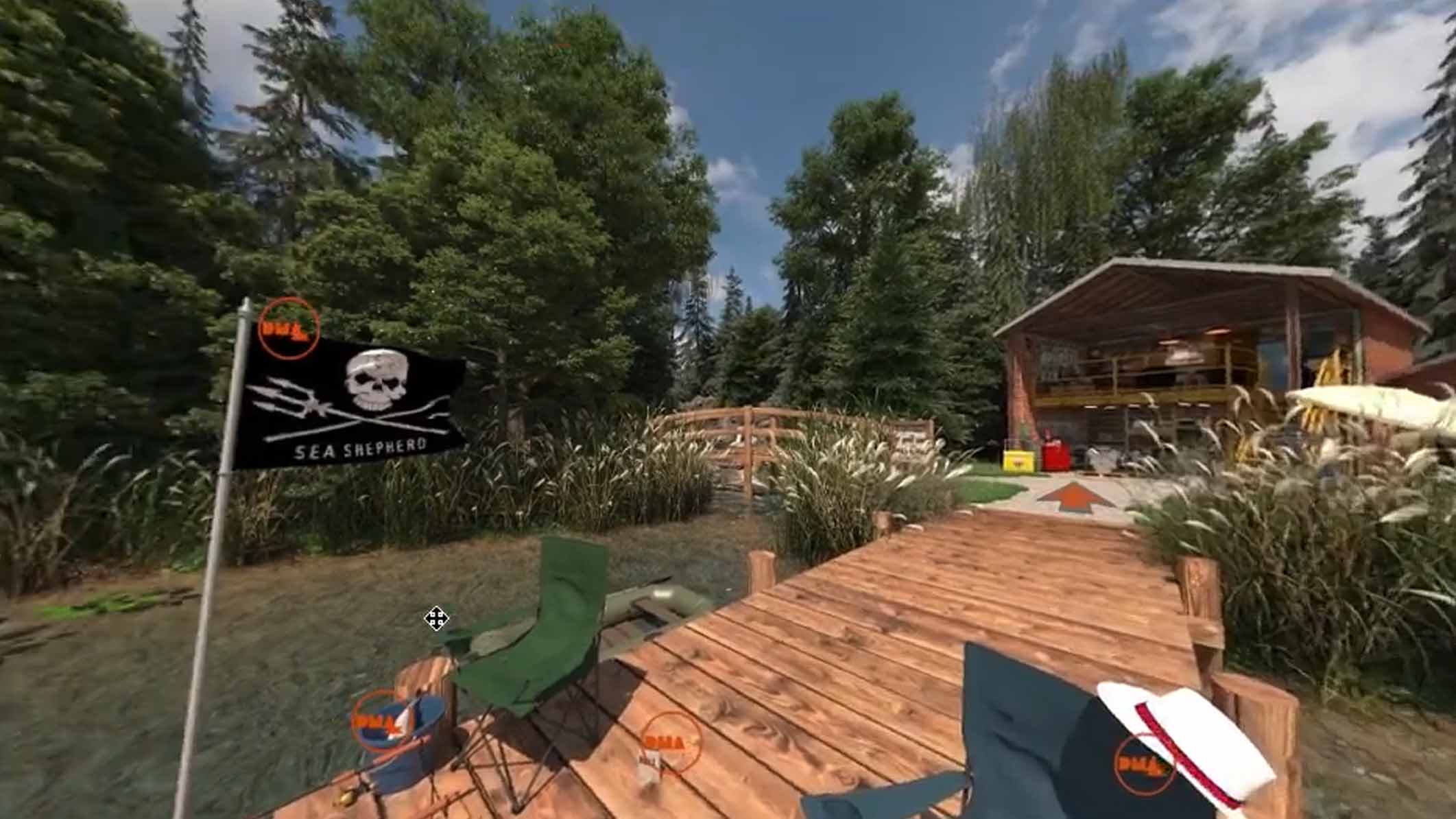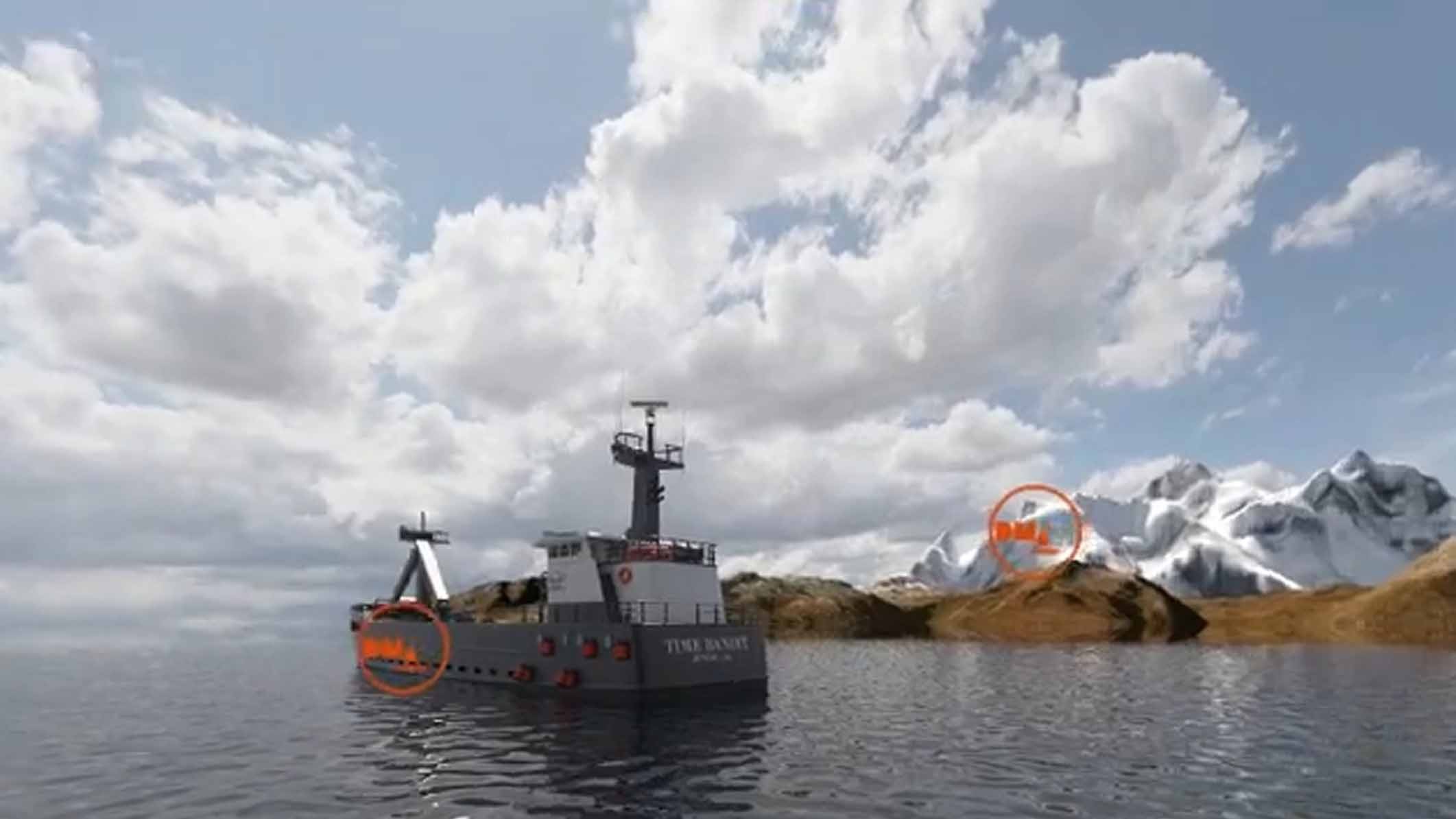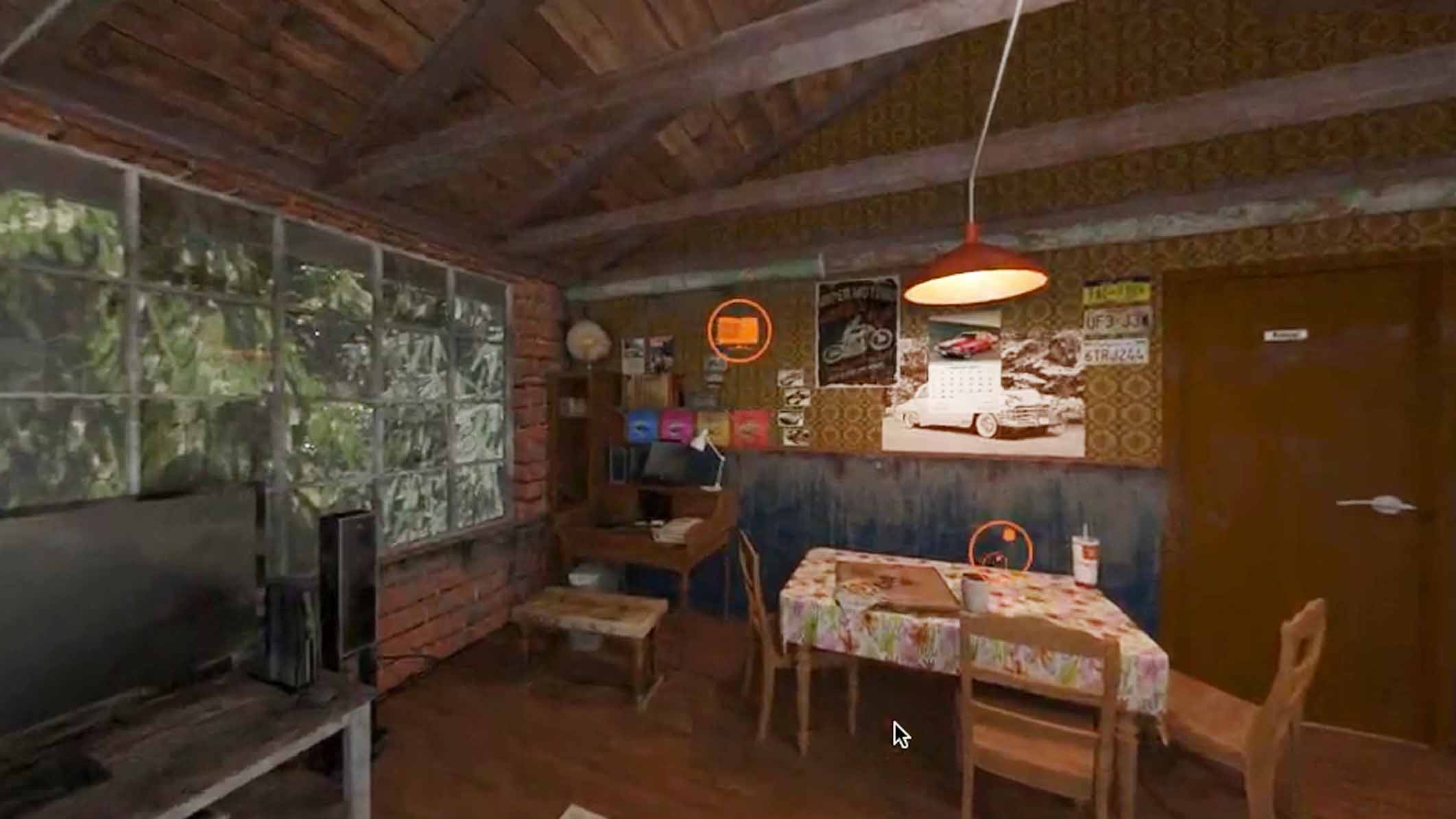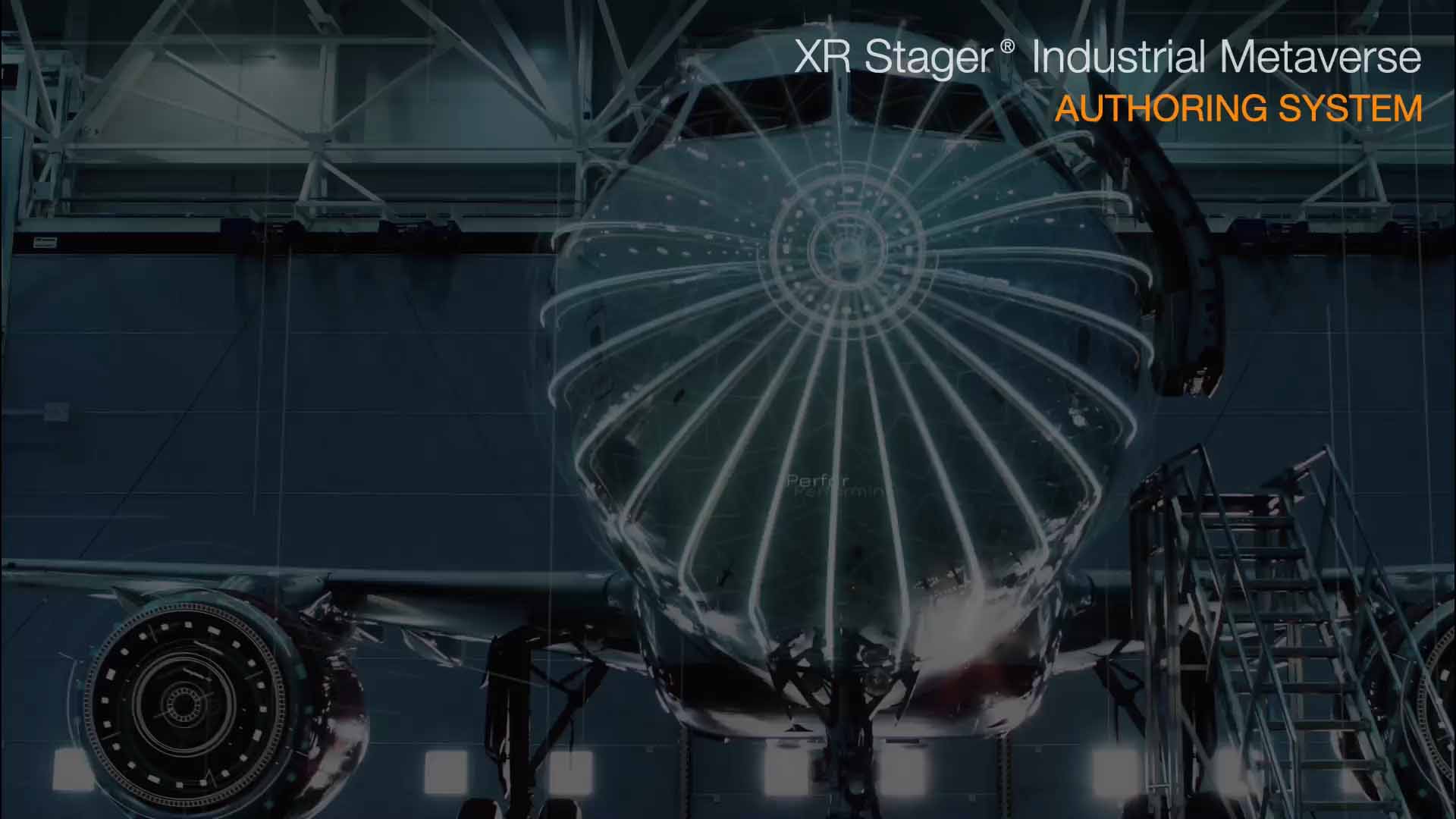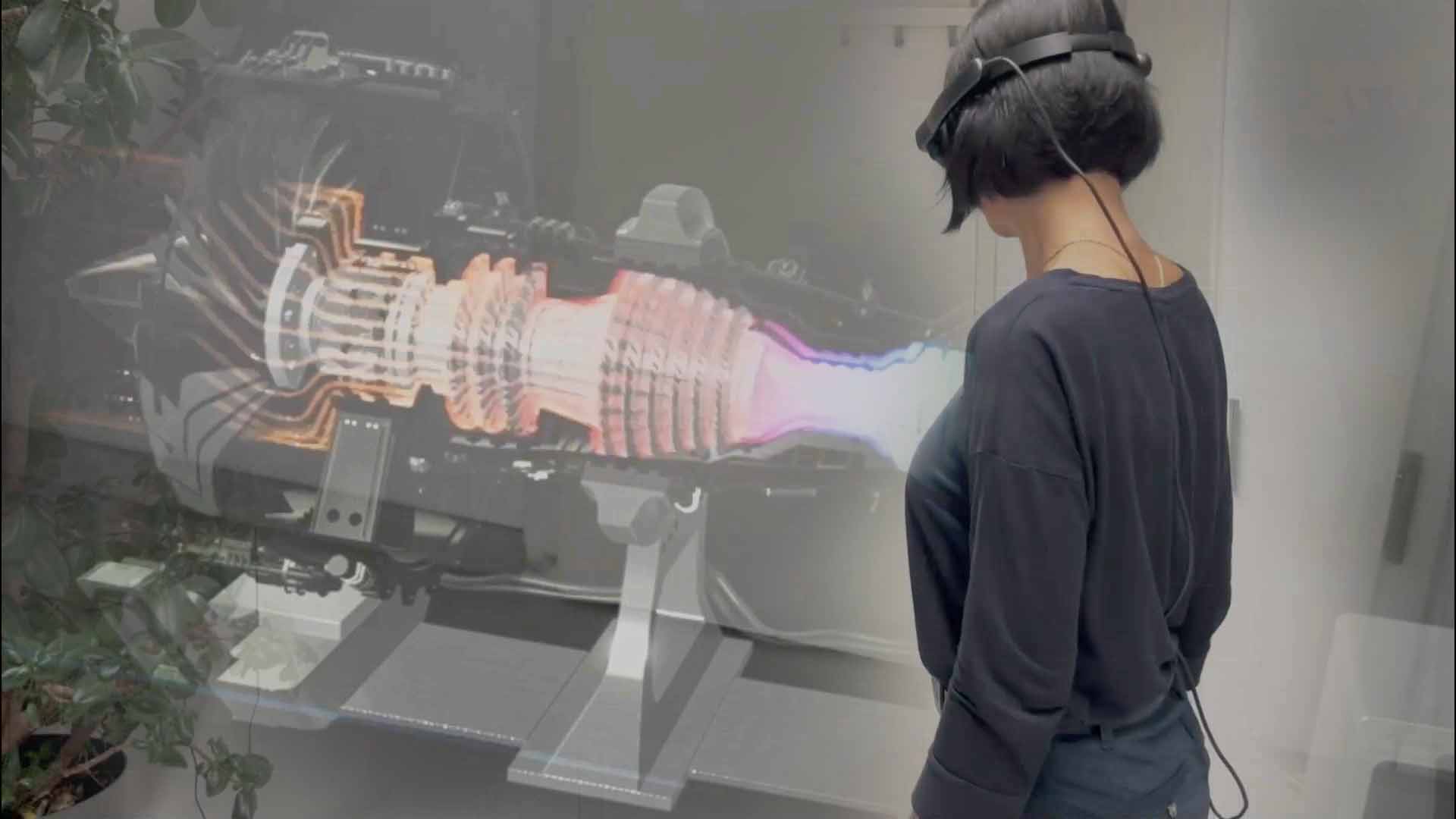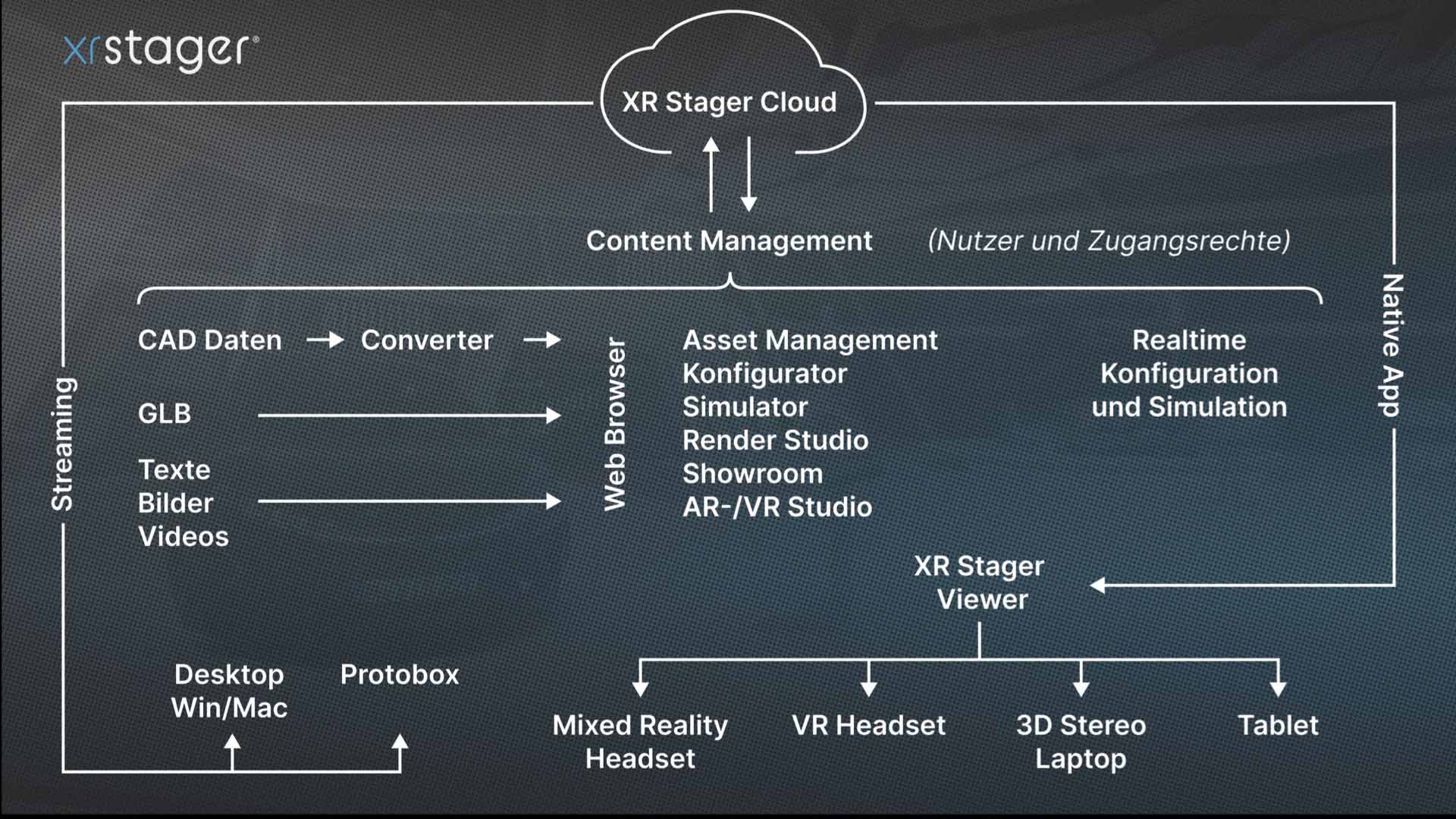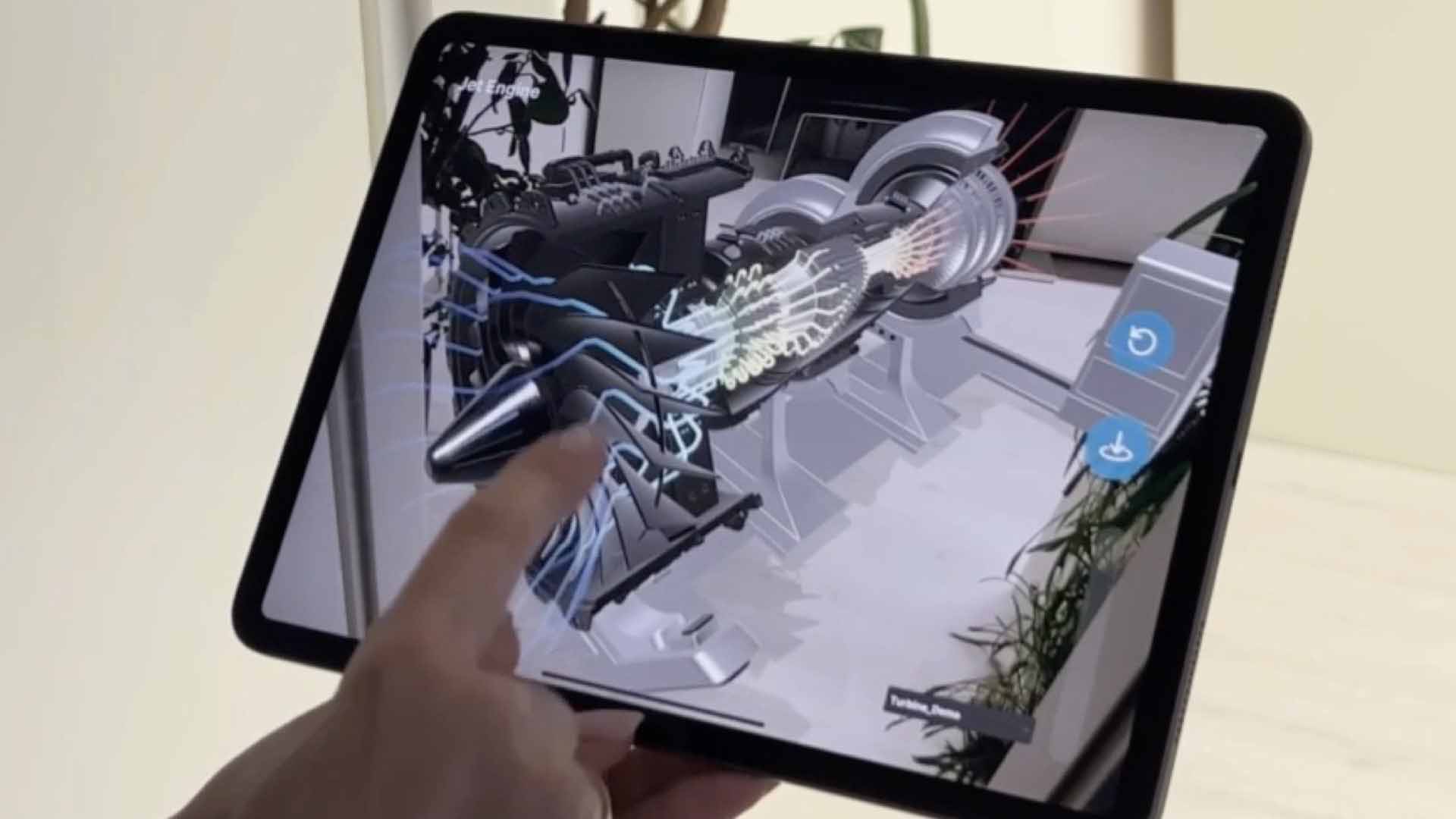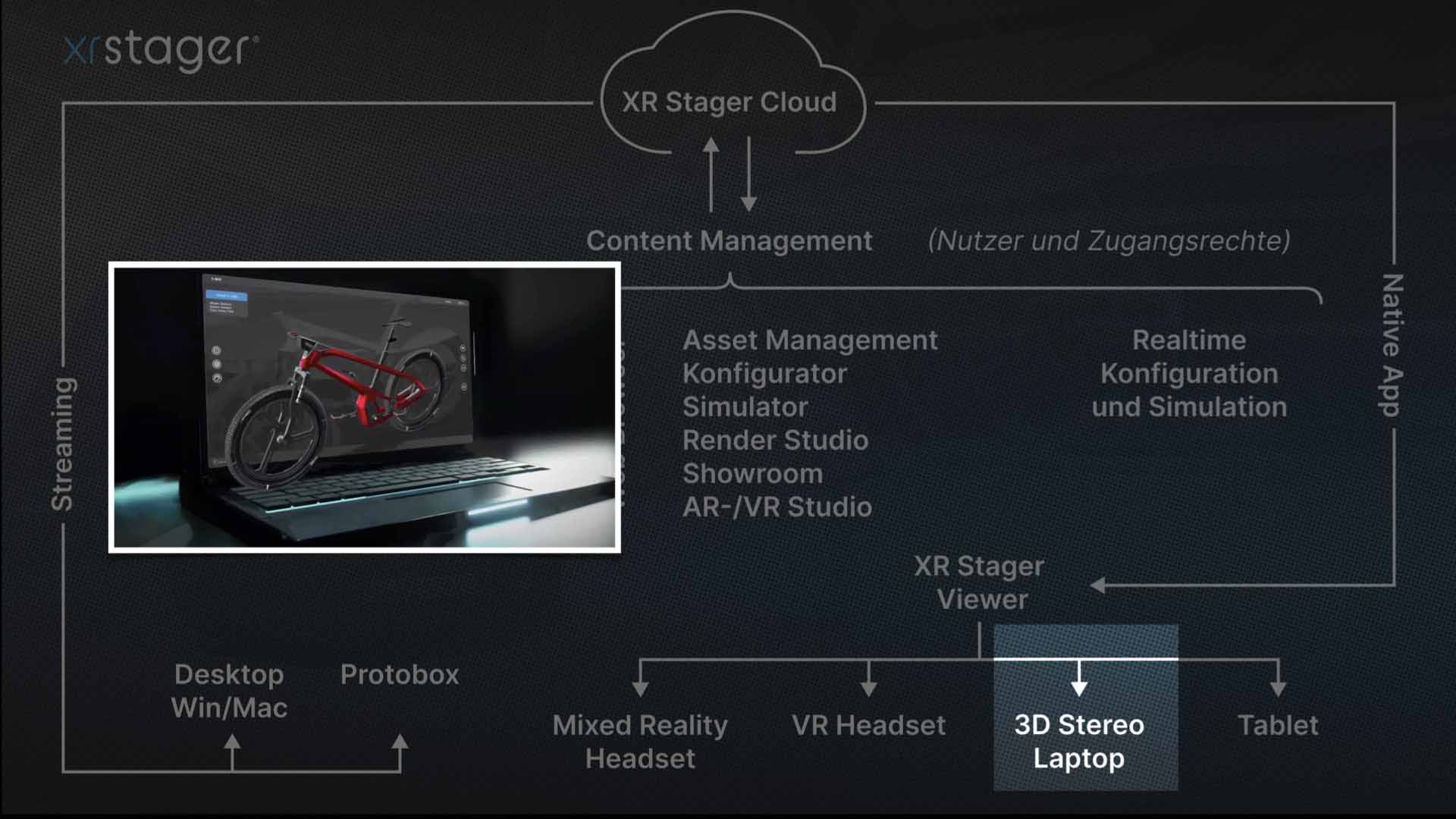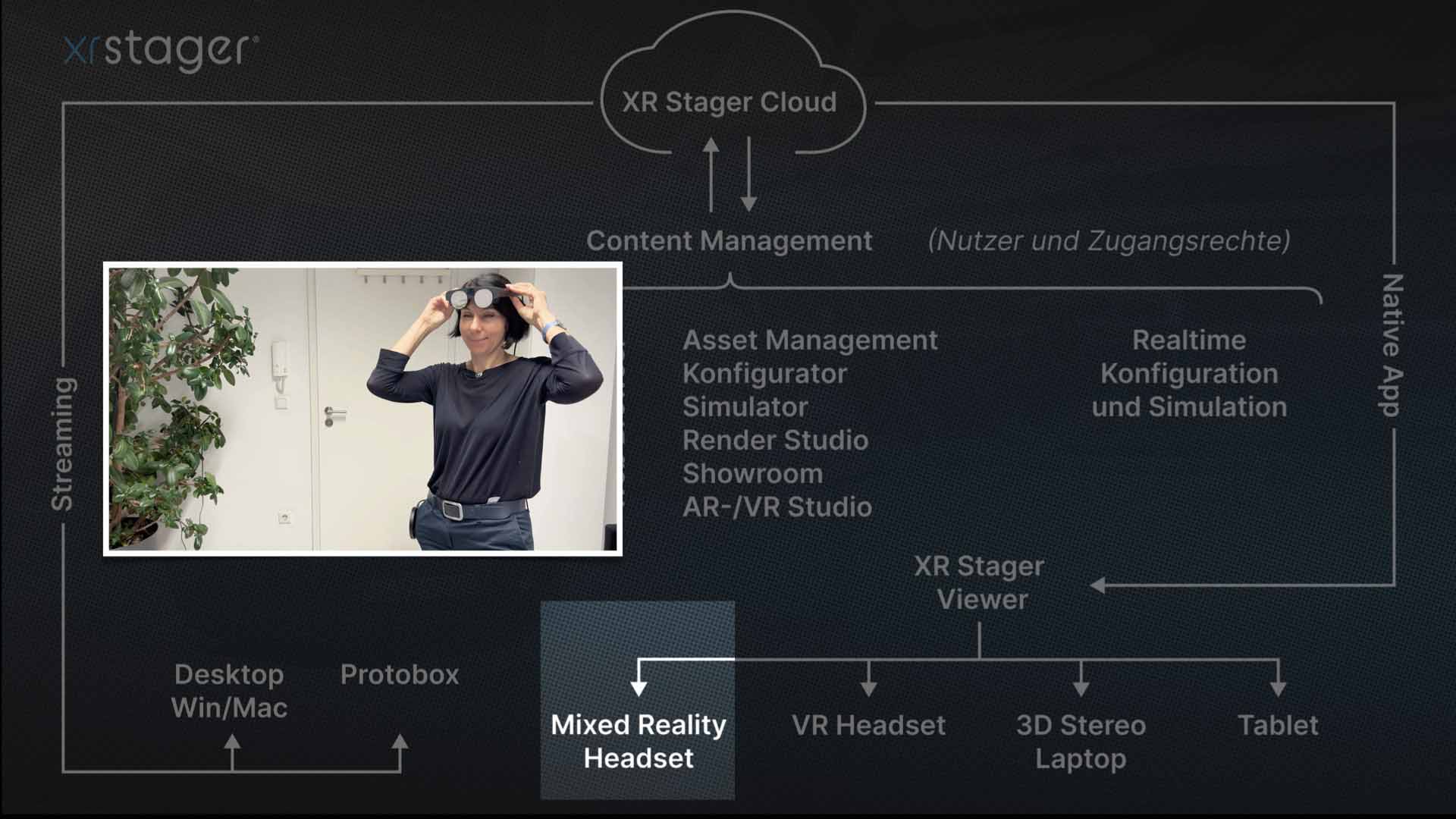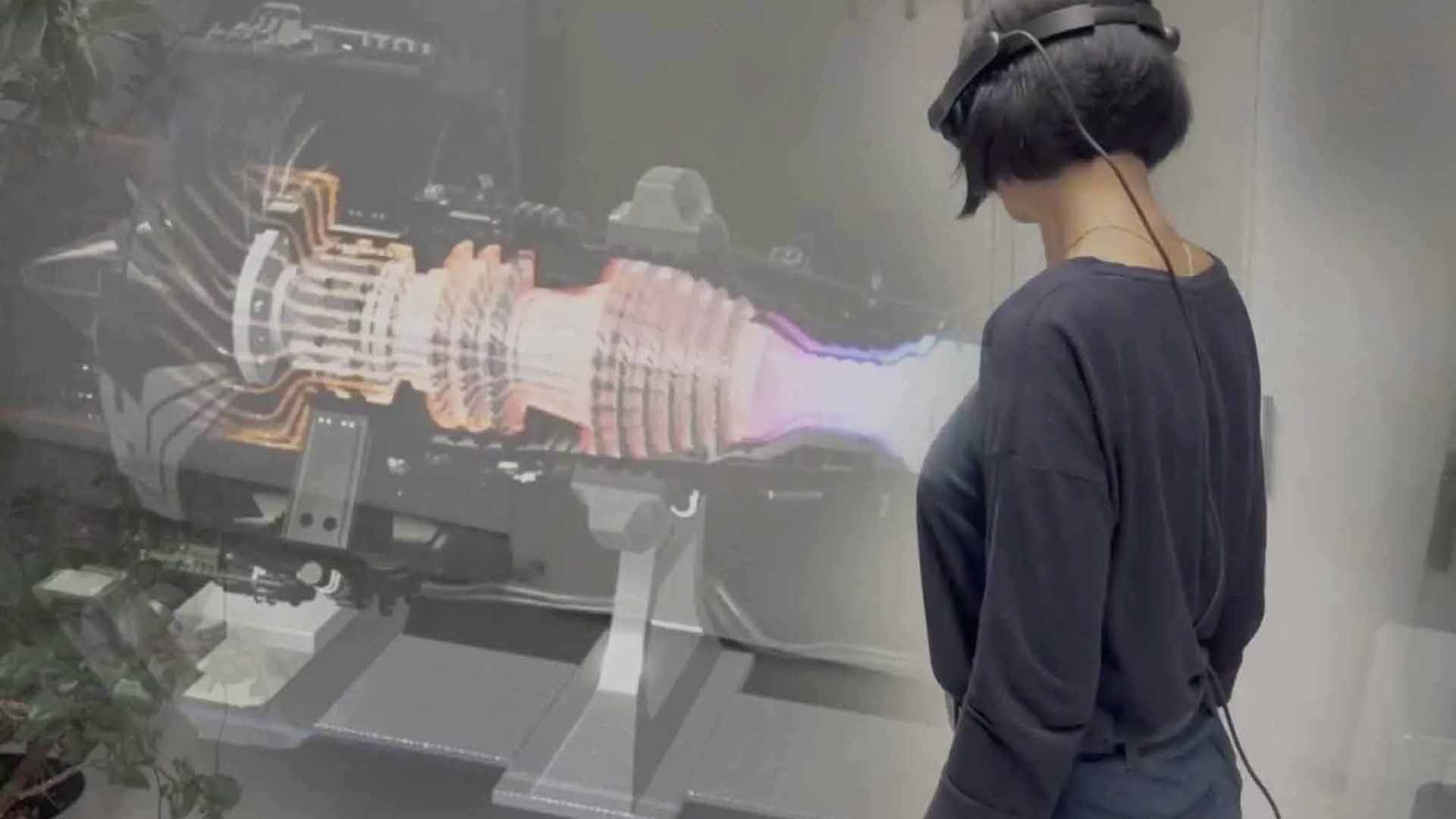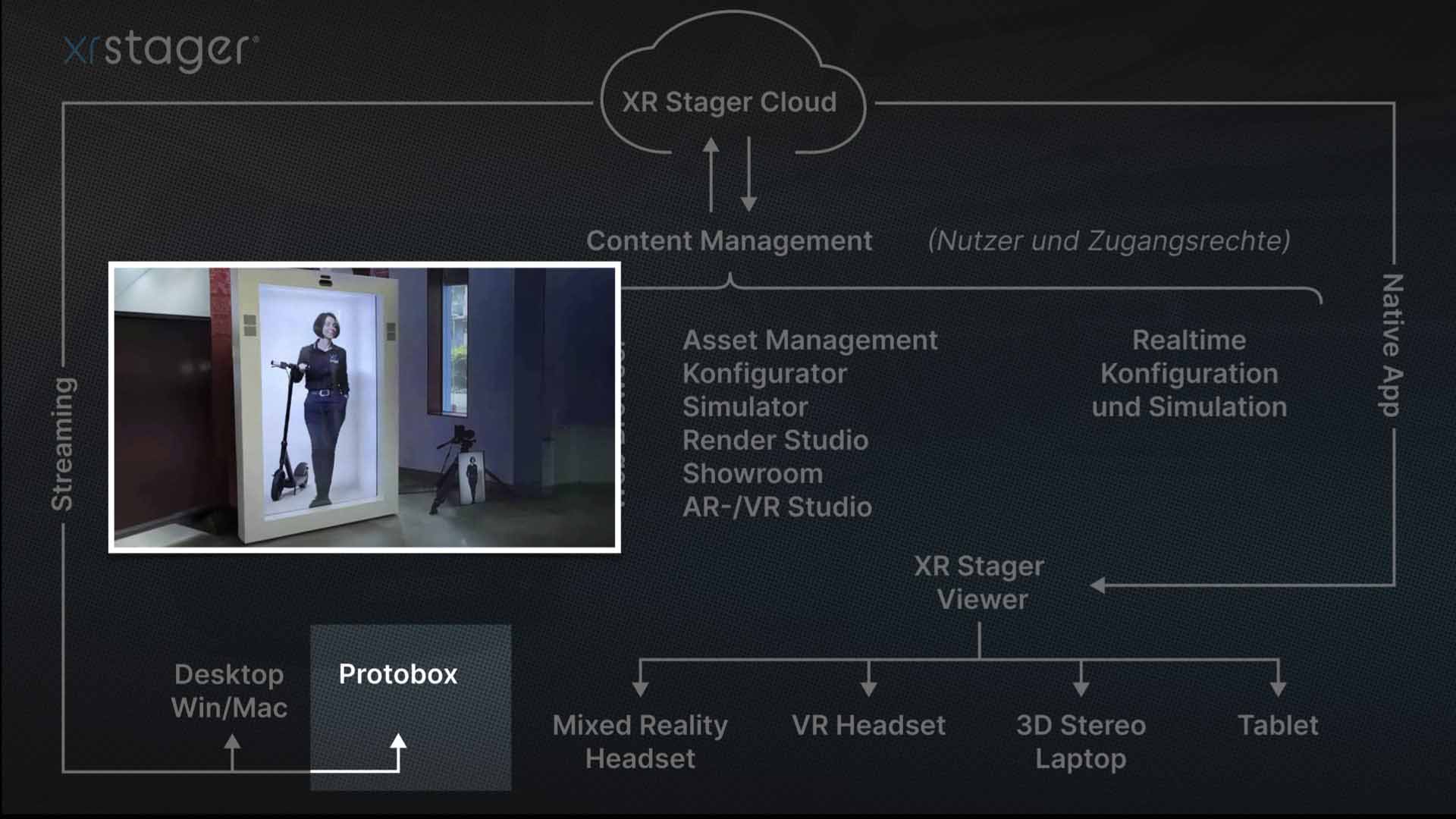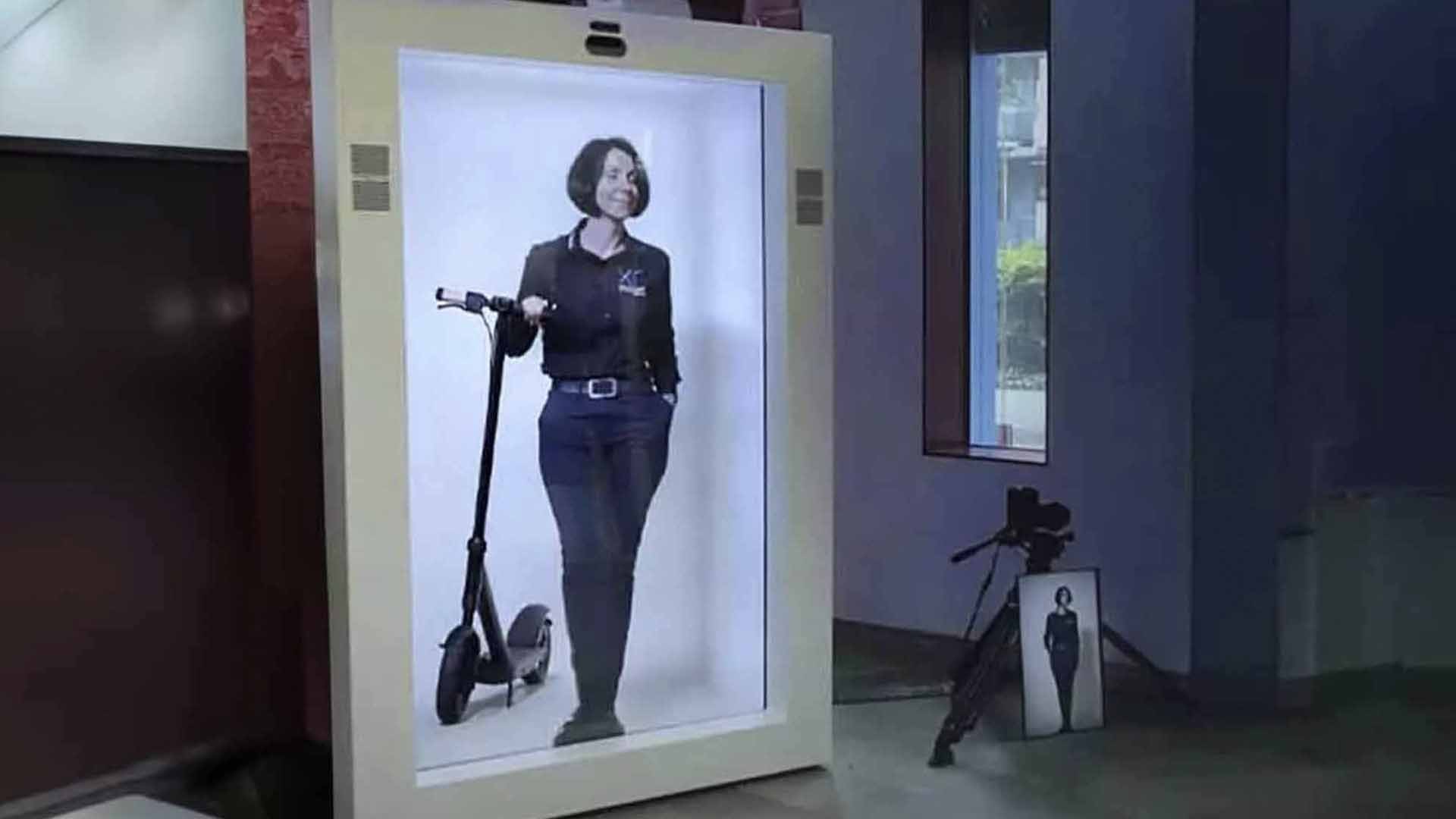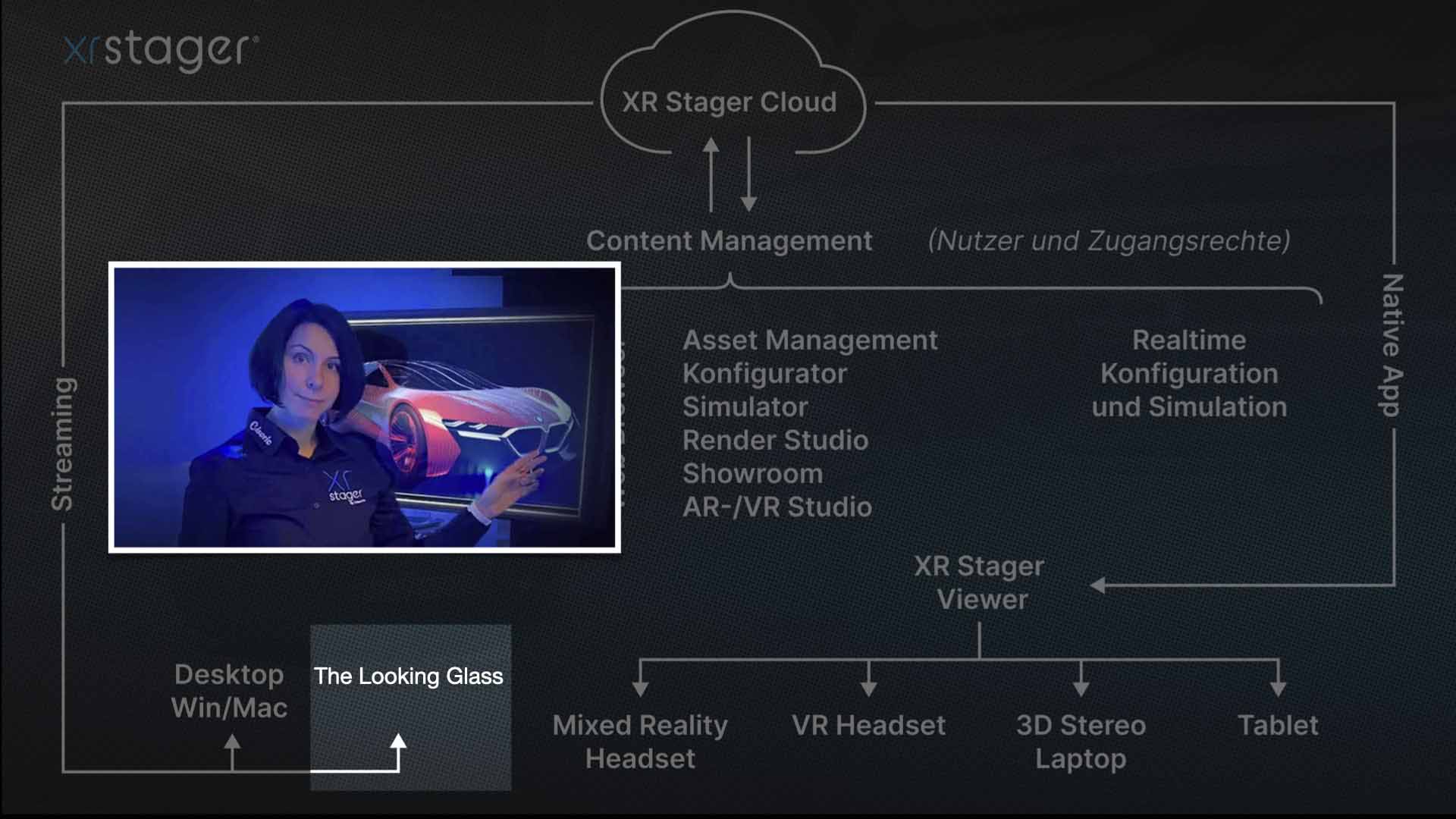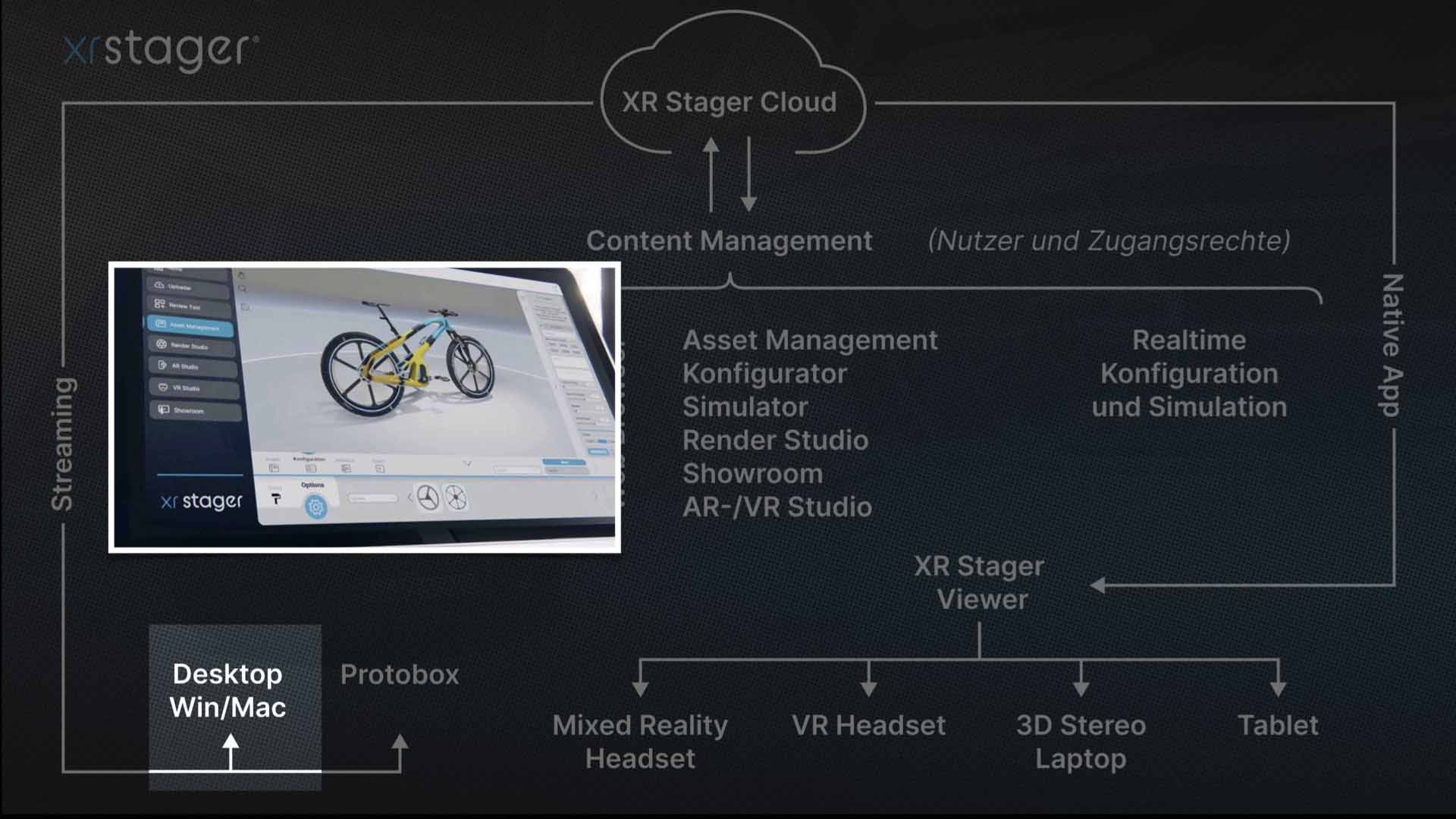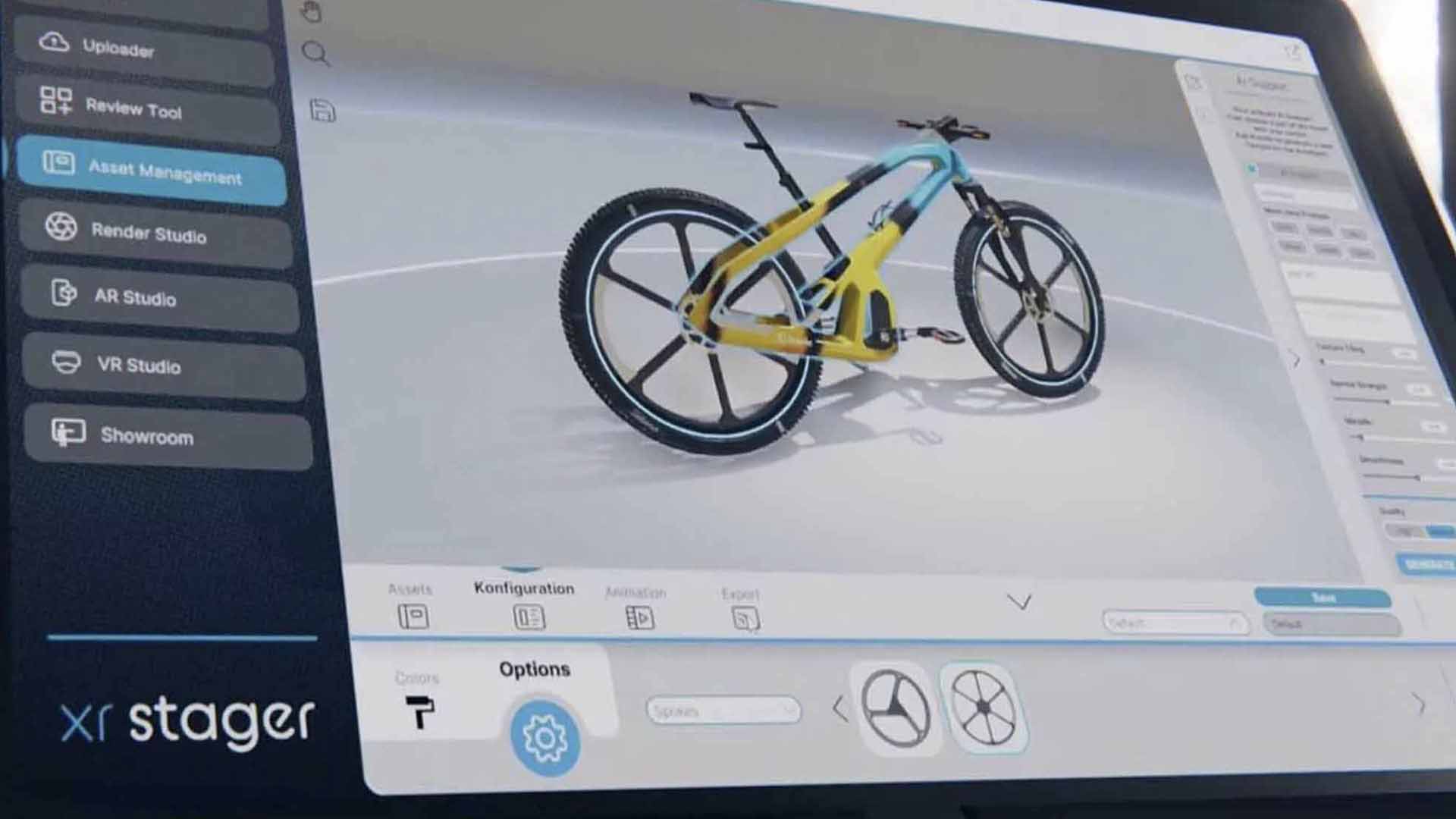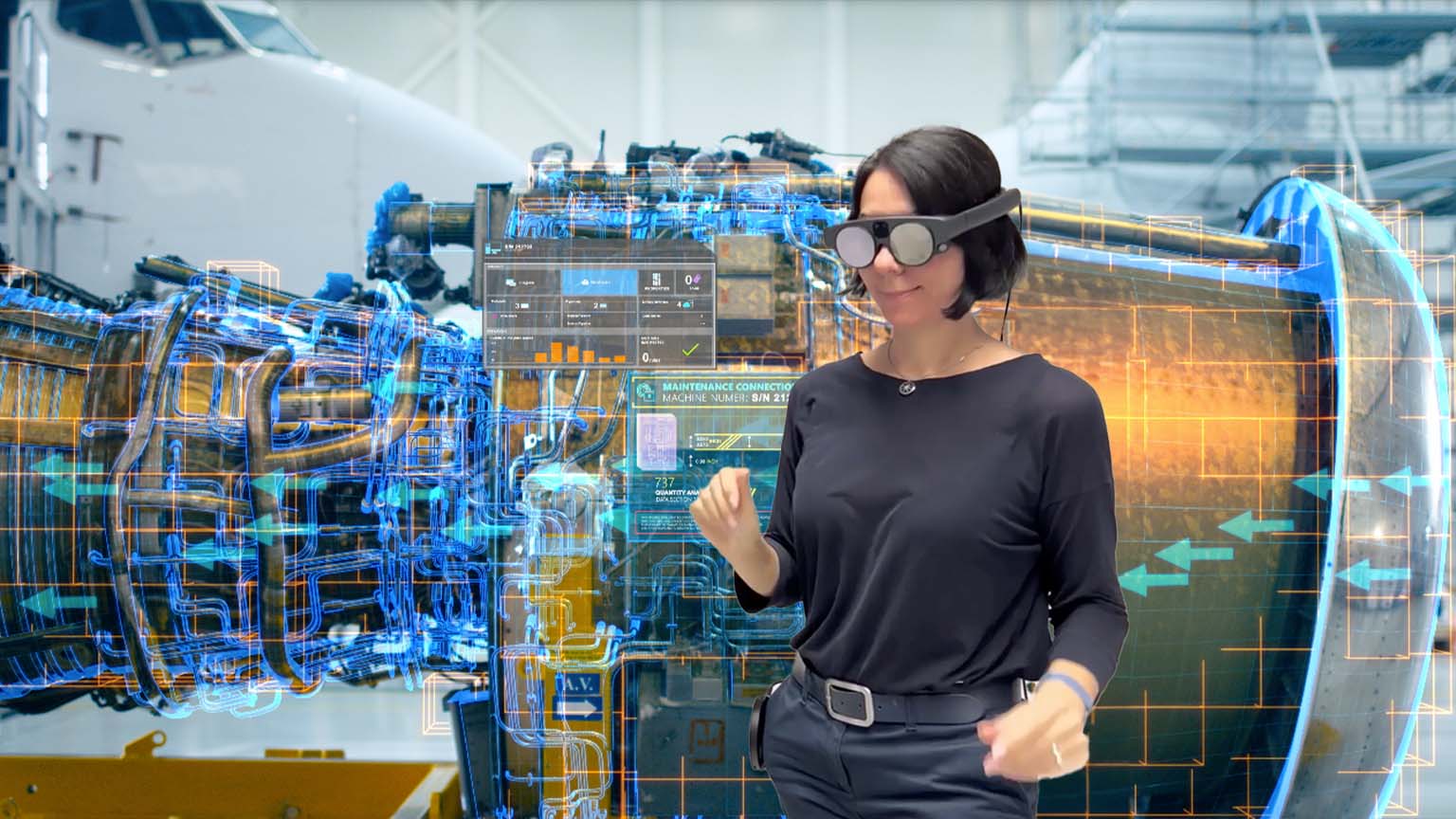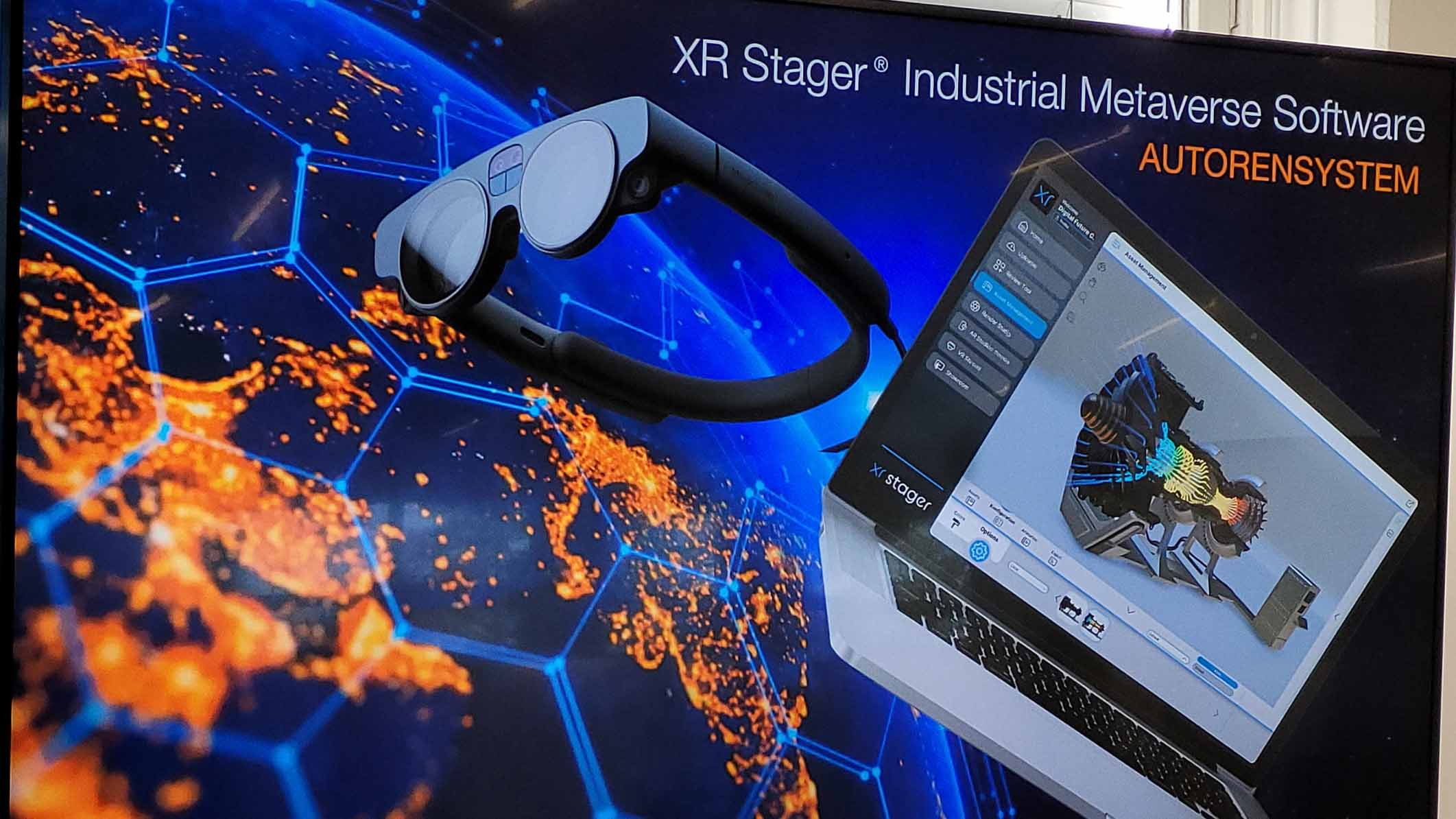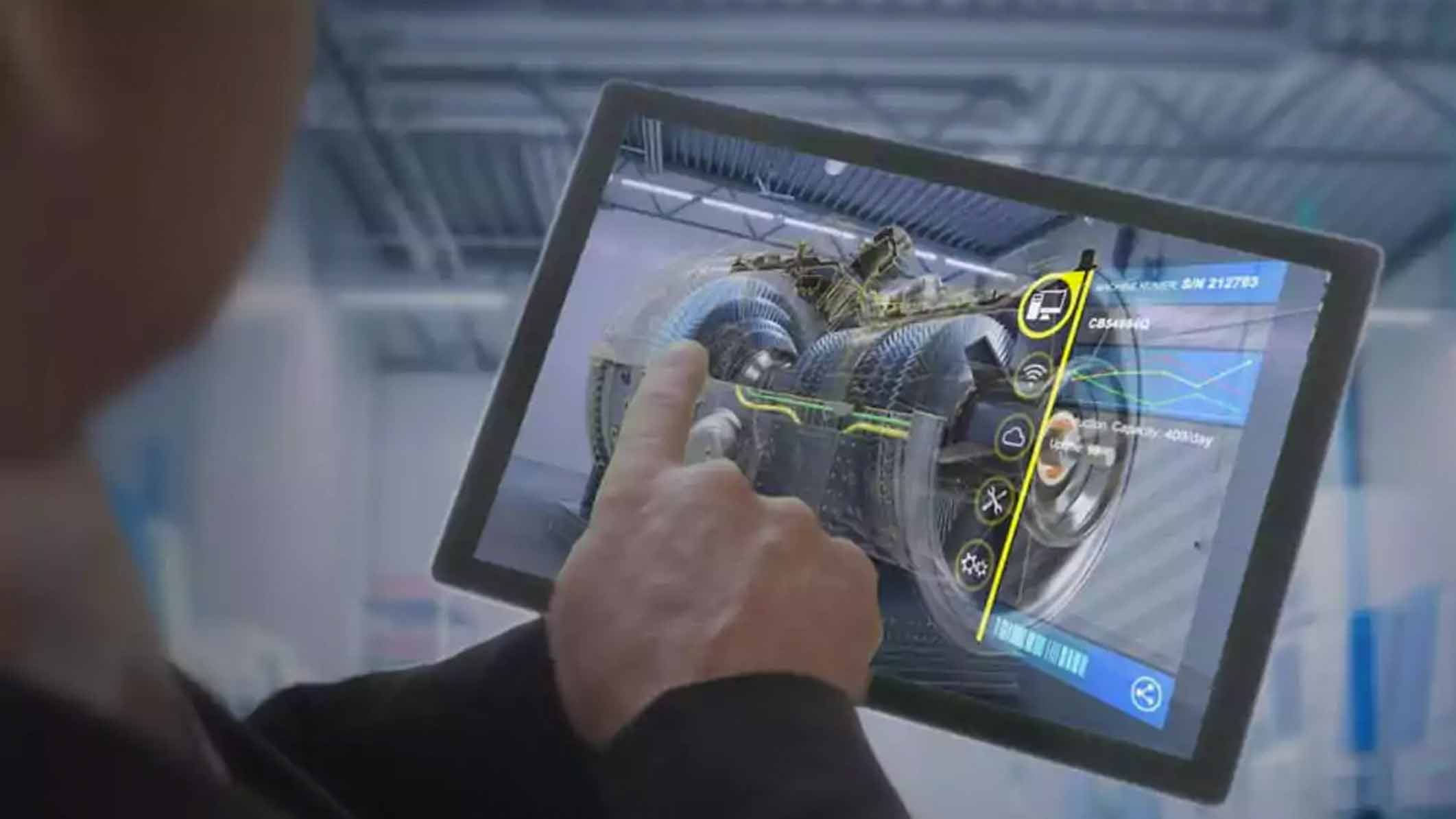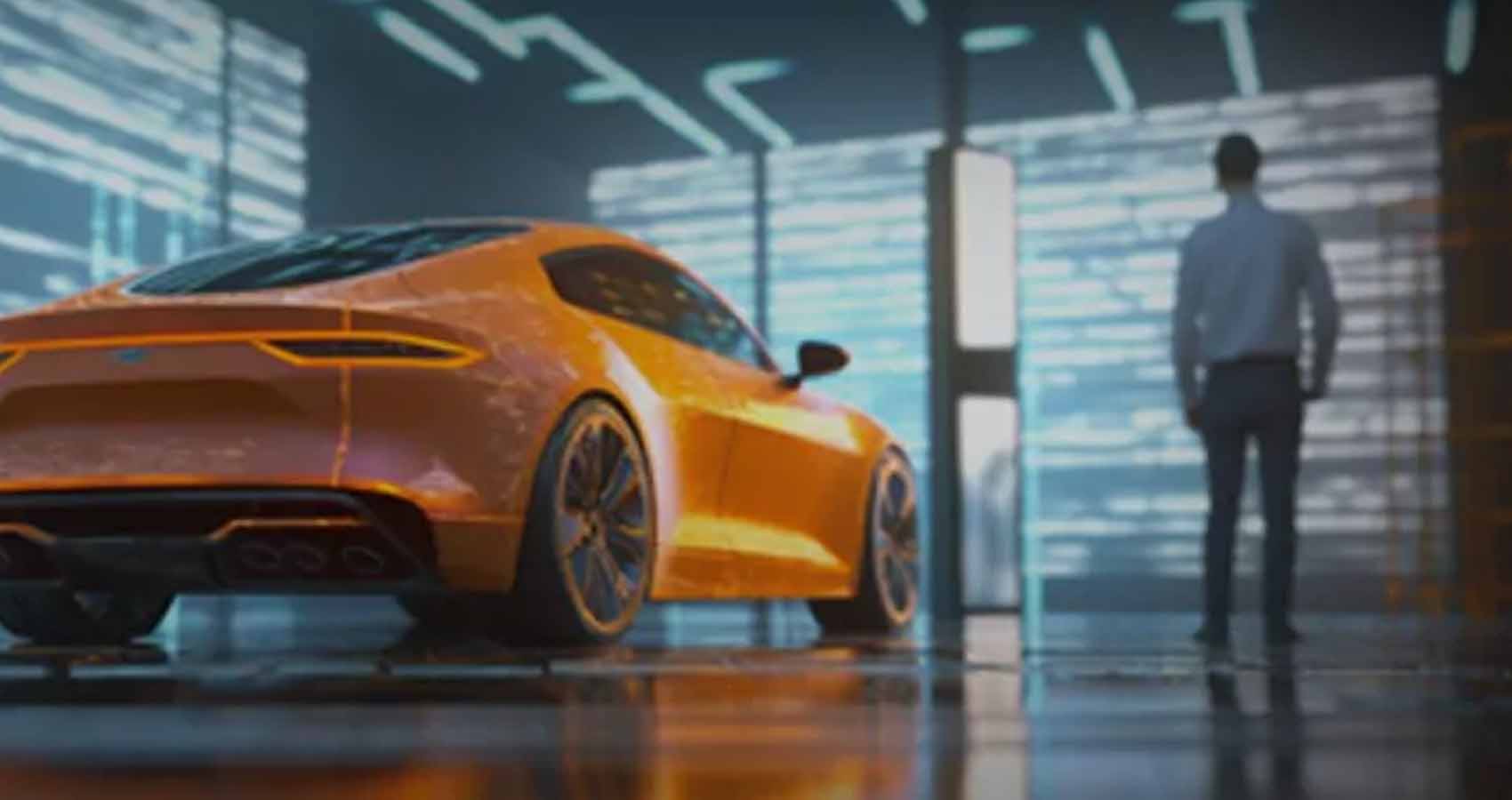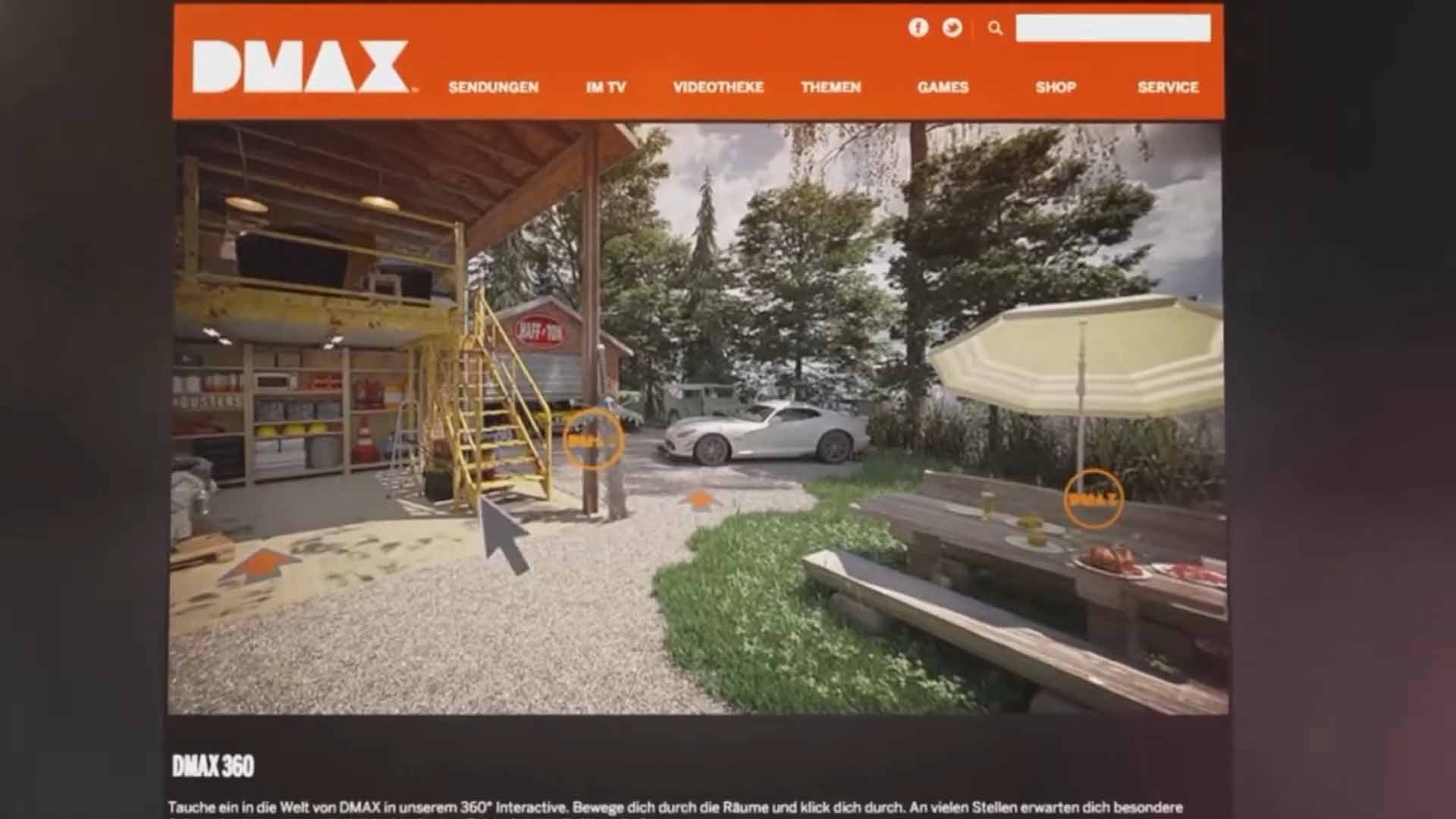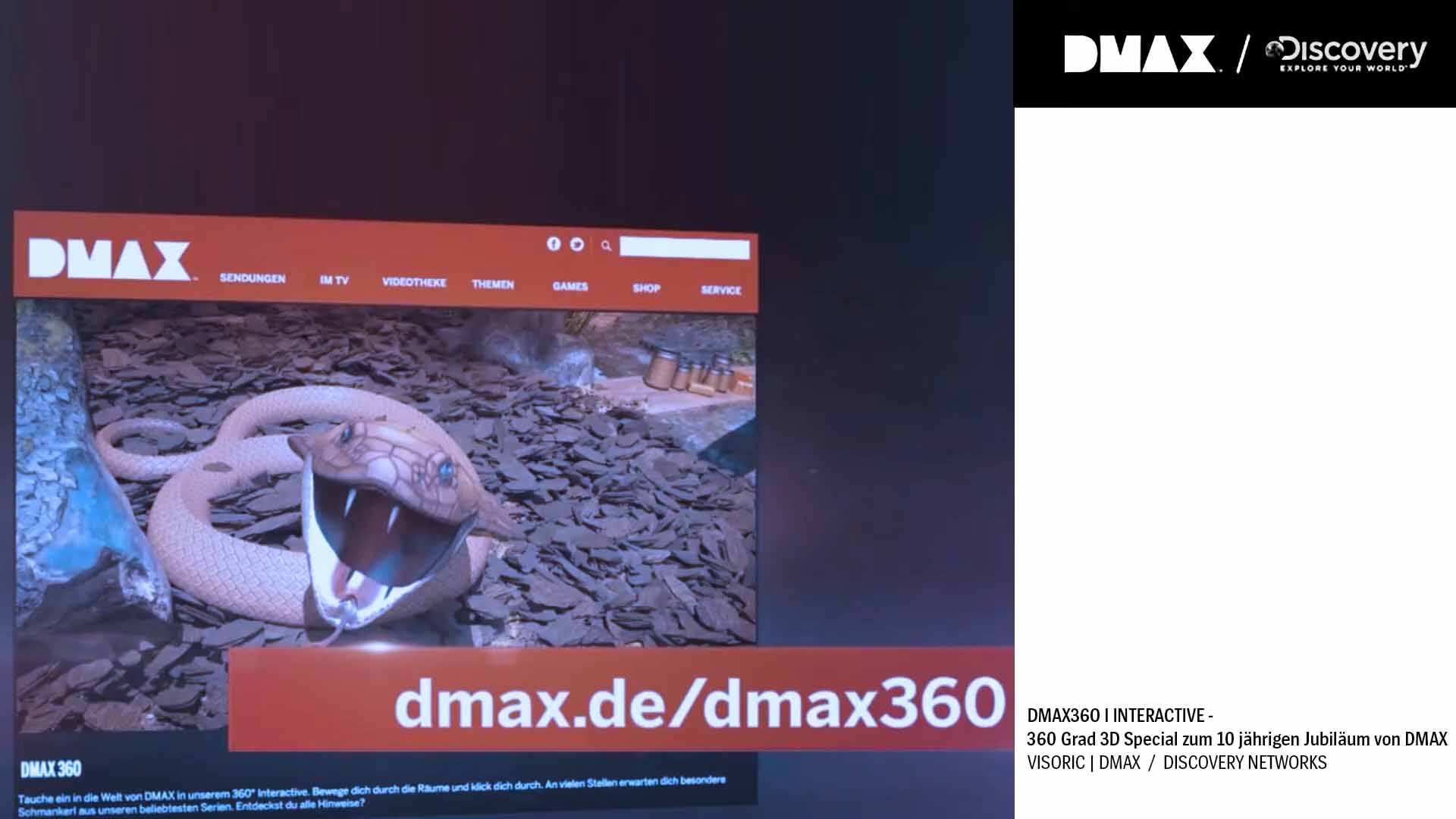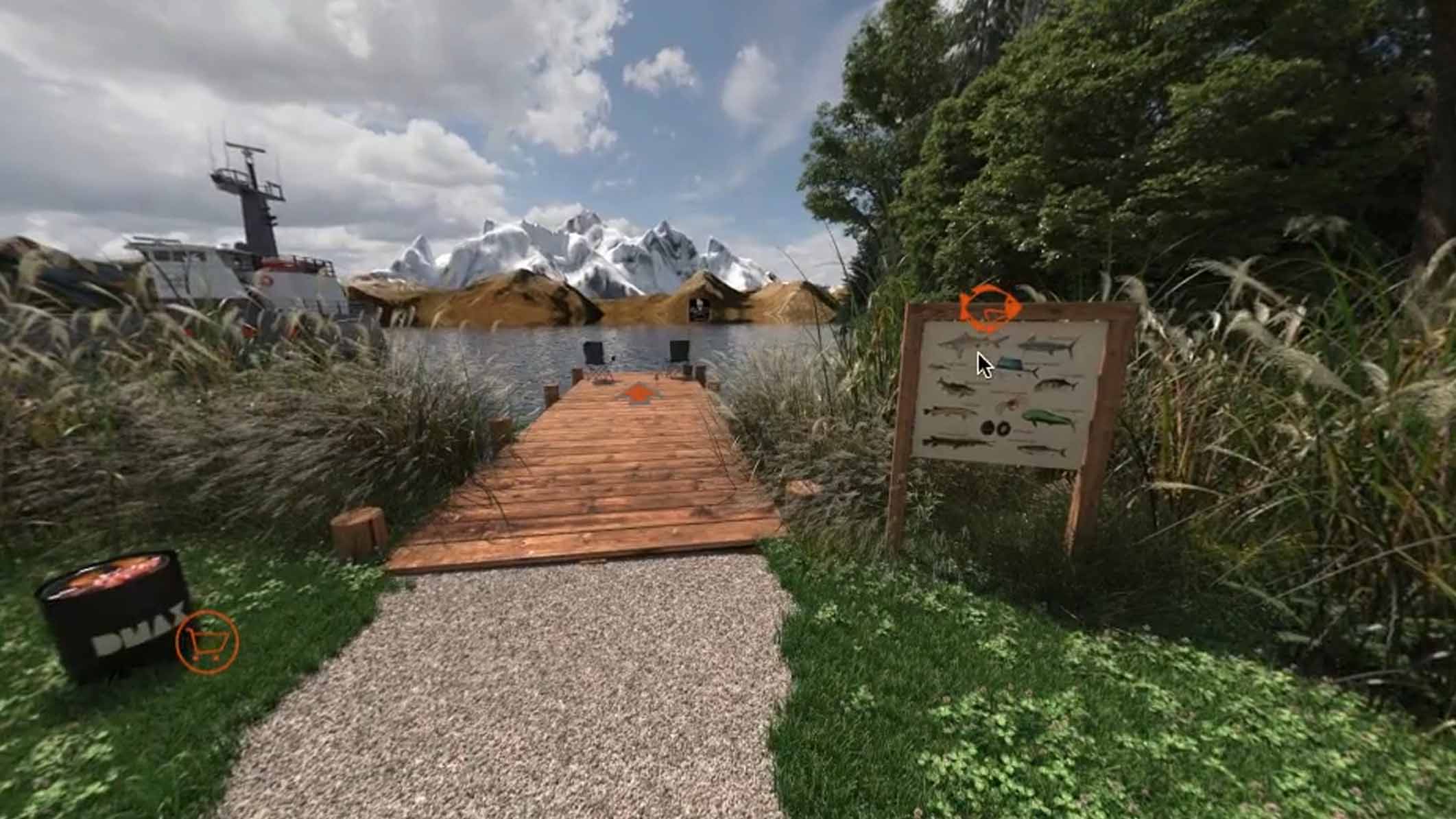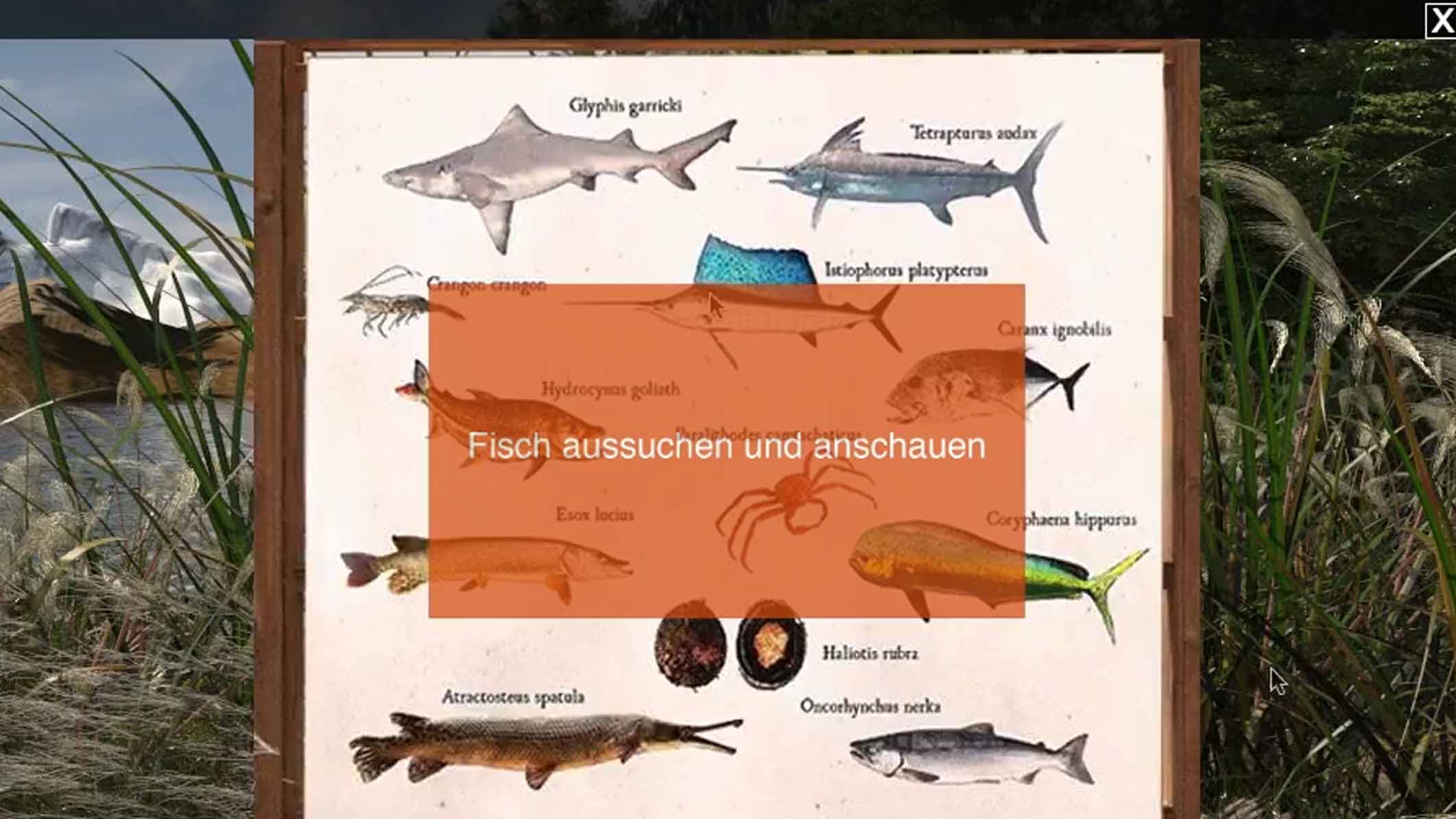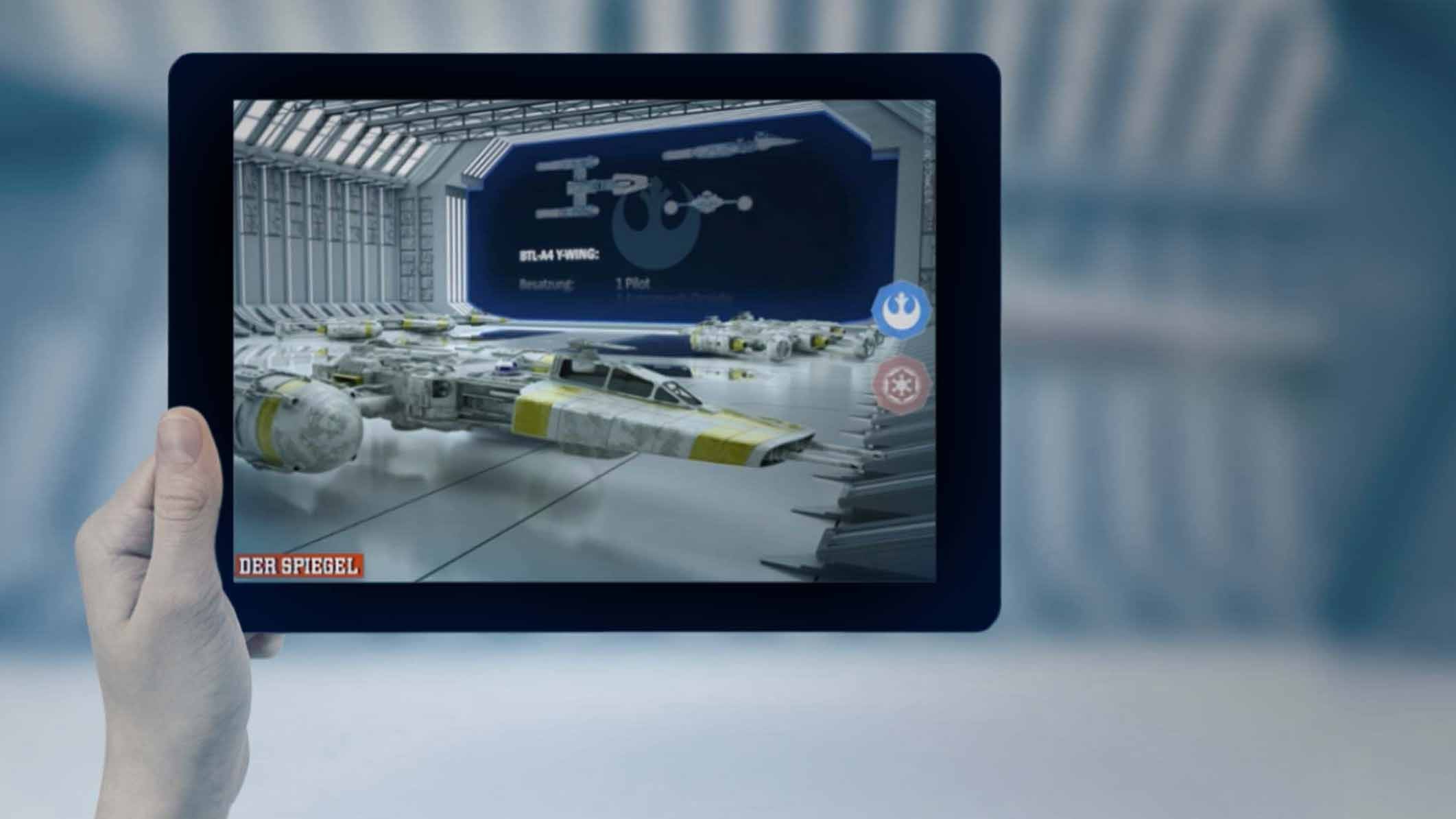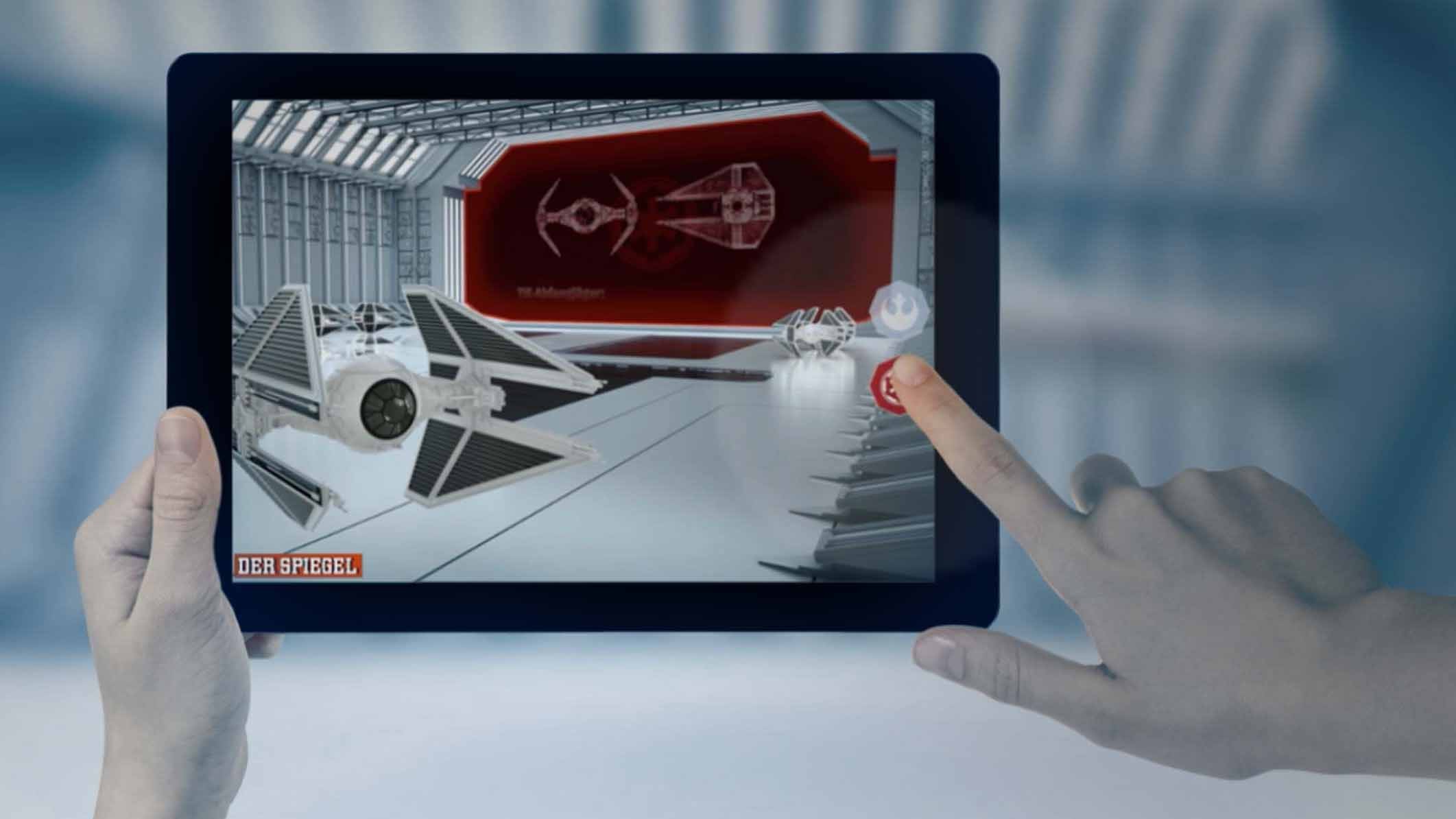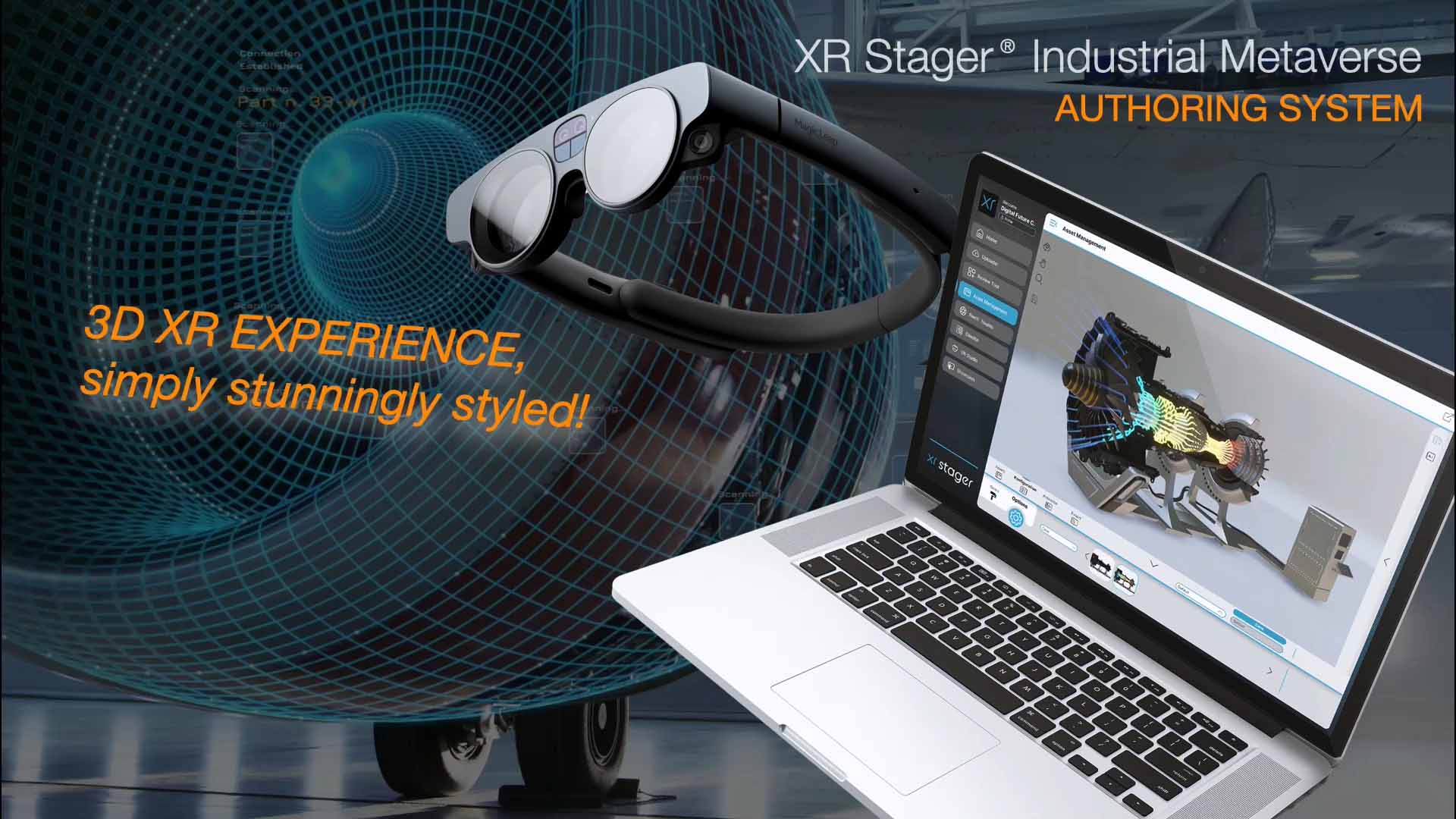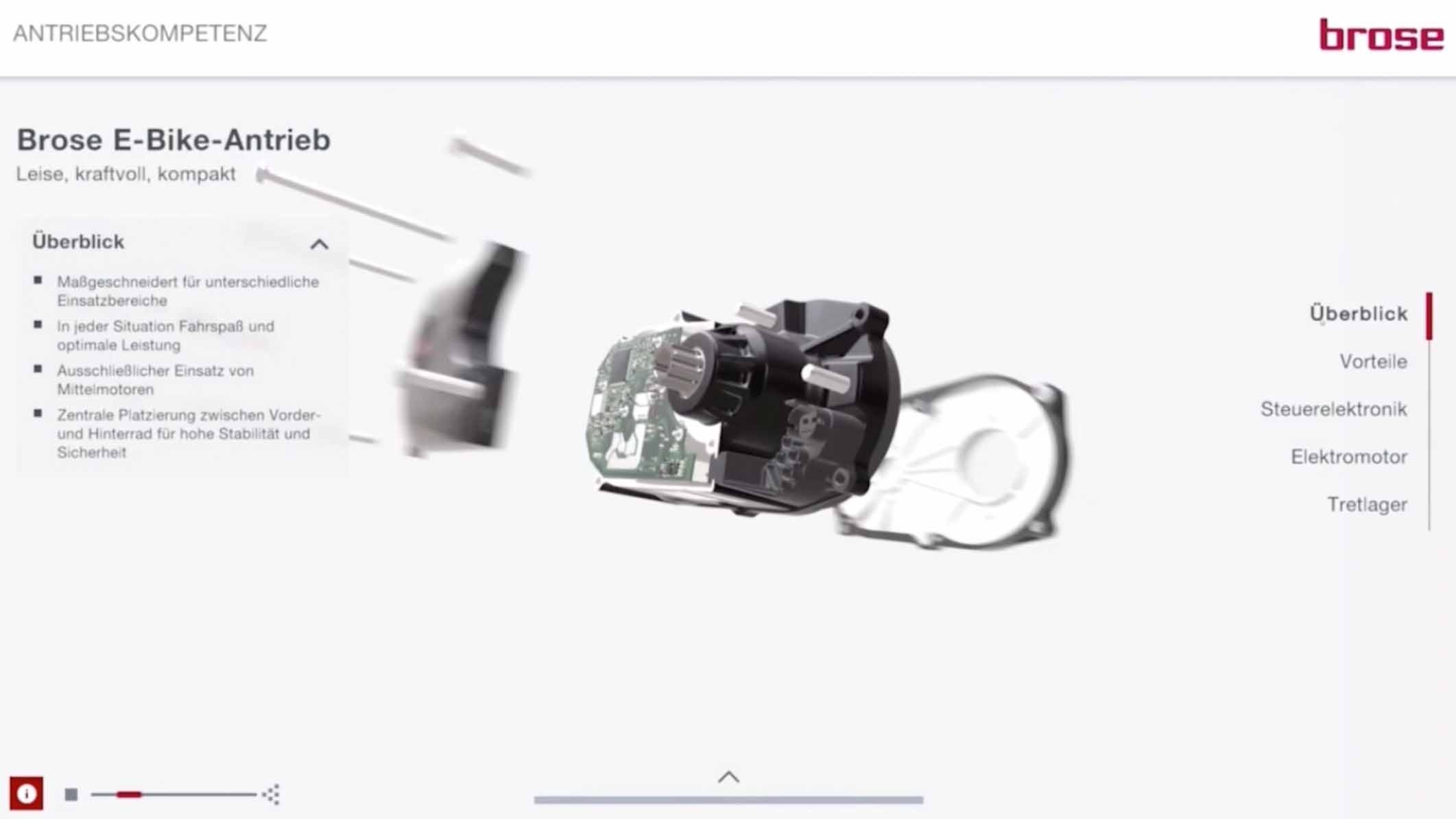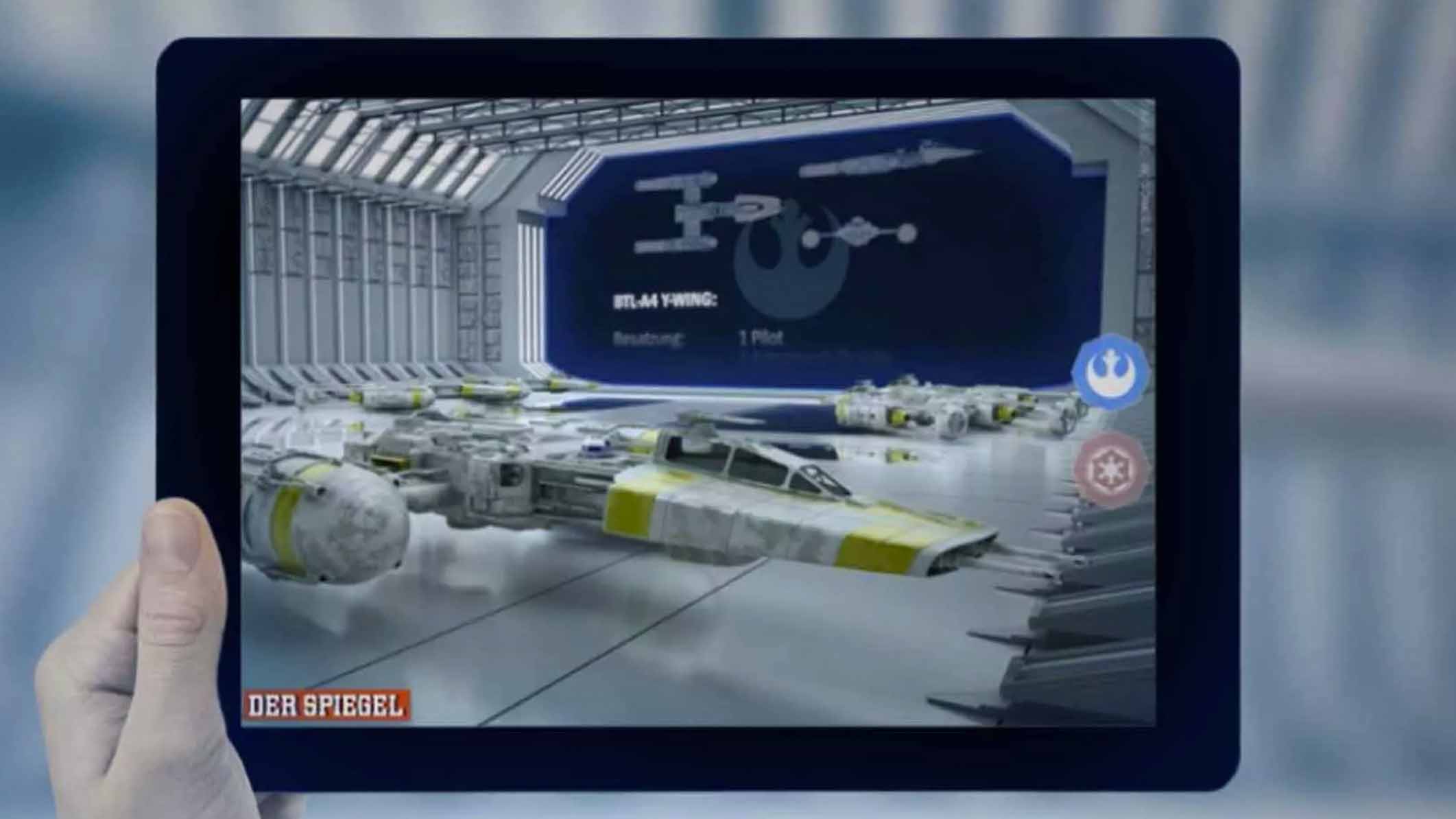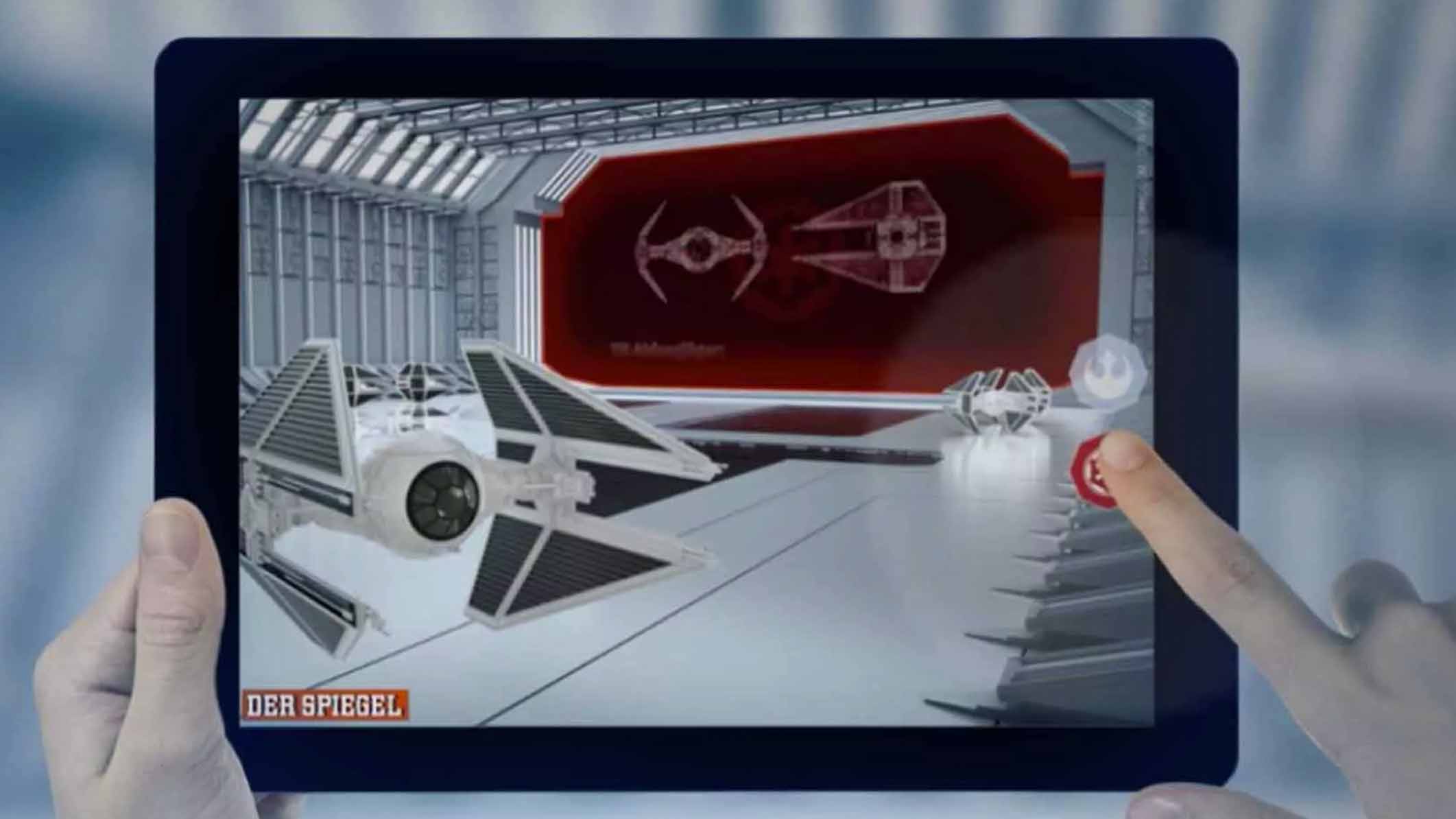Specialists in Real-time VR Environment.
Leverage our expertise to craft immersive applications for Web, Cloud, Online, and Offline.
- Cross-platform Apps: Whether for Web, Cloud, Online, or Offline – We create applications that impress on every platform.
- Multi-dimensional Realities: With our expertise in Virtual Reality, Augmented Reality, and Mixed Reality, we design experiences that revolutionize Production, Marketing, and Training.
- Industry-leading Technologies: Using the latest technology and methods, we elevate your projects to the next level, setting you apart from the competition.
Visorics Expertise in Real-time VR Environment
What is a Real-time VR Environment?
A real-time VR environment goes beyond simple VR displays. Here, real-world environments or data are transformed into immersive, highly detailed digital spaces that represent aesthetics and function in real-time.
These immersive environments can be used in a variety of ways, be it in marketing campaigns, technical training, or product demonstrations. The precision and real-time interactivity significantly expand their applications.
Our expertise in real-time VR environment not only enhances user experience but also ensures smooth integration and interoperability of applications. This maximizes the benefit and ROI of your digital projects.
Flexible Solutions Tailored to Your Business Needs
Regardless of your industry – be it automotive, aerospace, or machinery: Our real-time VR environments offer bespoke solutions that fit your needs seamlessly. By integrating technologies like AR, VR, and Mixed Reality, we provide forward-looking and adaptable visualization possibilities.
We understand the challenges of showcasing products at trade fairs or in customer support and maintenance apps. Therefore, we craft solutions that align perfectly with your requirements.
Leverage our comprehensive expertise and opt for innovative approaches that set you apart from the competition.
From Real-time VR Environments to the Metaverse
The realm of real-time VR environments unlocks endless opportunities. With our expertise, harness these potentials by crafting applications and experiences showcased in online showrooms, the metaverse, and beyond.
The blend of captivating visualization and functional applicability makes our VR solutions a cornerstone of your business strategy.
With our extensive experience, rest assured you’re always technologically up-to-date and meeting the rising expectations of your clientele. Reach out to us and witness how we collaboratively shape the future of real-time VR environments.
If you’re looking to take the next step in your company’s digital evolution through real-time VR environments, we’re here for a tailored consultation.
Unlock the potential of your products with our real-time VR environments
Immersive Experience: Dive into realistic scenarios and leverage Virtual Reality for stunning product presentations.
Augmented Reality: Integrate AR and VR to tap into innovative product design and training opportunities.
Interactive 3D Experience: Engage with products in real-time within your customer’s real-world environment.
Distinct Visualizations: With our expertise in VR and AR, we offer you striking visual representations and experiences.
How to reach us!
Email: info@visoric.com
Phone: +49 89 21552678
Contact Person:
Ulrich Buckenlei (Creative Director)
Mobile +49 152 53532871
Email: ulrich.buckenlei@visoric.com
Nataliya Daniltseva (Project Manager)
Mobile + 49 176 72805705
Email: nataliya.daniltseva@visoric.com
Address:
VISORIC GmbH
Bayerstraße 13
D-80335 Munich

Questions about Real-Time VR Environments?
If you would like to learn more about the diverse applications and benefits of our technologies in the field of real-time VR environments, we are here to help. Don’t hesitate to contact us! We look forward to your inquiry.
Where are Real-Time VR Environments Used in the Business?
Real-Time VR Environments for Mobility & Transport
Applications:
- Interactive Mobility Models in Real-Time: We transform your mobility projects into lifelike and interactive VR experiences that showcase your innovations impressively.
- VR Driving Simulators and Flight Experiences: Dive into virtual worlds and experience your air taxi, e-motorcycle, or e-coupe in all variations – close to reality and without limits.
- Successful Presentation of Mobility Concepts: Our VR environments are not just representations but staged experiences. From the initial idea to the interactive showroom – we bring your vision into virtual reality.
Customized VR Environments for Corporate Use
Application Areas:
- Immersive VR Worlds: We design customized VR environments, from urban scenarios to complete universes, based on your data, photogrammetry, or 3D scanning. Our approach spans from initial conception to full realization, ensuring your vision becomes reality.
- Detailed VR Experiences: Our team emphasizes the finest details, creating emotional visualizations with high-quality textures, perfect lighting, and remarkable details. The critical difference often lies in these nuances – contact us and discover how we can bring your content to life.
Real-time VR Environment for Service & Training
Application Areas:
- Training: Using our VR environments, employees can be trained within virtual factory settings. This allows for realistic training scenarios while minimizing potential risks.
- Remote Maintenance: With VR-supported maintenance, technicians can operate regardless of their current location, saving on travel costs and minimizing potential downtime.
AR/VR/MR Real-time Cloud Environments for Your Applications
Application Areas:
- XR Stager® Cloud Solution Platform & XR Stager® Viewer: Our XR Stager® technology enables easy creation and distribution of VR environments. Thanks to web browser support and our app, you can reach a wide range of devices.
- Extensive Device Support: Leveraging our experience, we offer native support for numerous devices such as Magic Leap 2, Apple Vision Pro, Proton Epic, and many more. Trust in the preservation of your investment through maximum compatibility.
- Unified Data Foundation for Digital Worlds: We ensure that our real-time environments run on all relevant XR devices. Regardless of the device or platform – we efficiently and reliably support VR, AR, and MR applications.
Real-time VR Environments in Industry 4.0
Application Areas:
- Planning & Simulation: Our advanced VR tools enable intuitive production planning. This means not just cost savings for your company but also a significant increase in efficiency.
- Prototyping: Accelerate your product development process by using our VR environments. Test and improve products in virtual labs before they go into production.
Real-time VR Environments for Machine Maintenance and Repair
Application Areas:
- Diagnosis & Problem Identification: With our VR technology, we enable you to quickly detect and locate defects or vulnerabilities in machines. Our solutions are designed to optimize your diagnostic processes and save time.
- Remote Maintenance & Repair: Our specialized VR solutions allow technicians to virtually immerse themselves in machines on-site. We support your company in performing maintenance more effectively while simultaneously minimizing travel costs and downtimes.
Real-time VR Environments for Product Presentations & Demos
Application Areas:
- Convenient Management in the XR Stager® 3D Library: Transform your CAD data into photorealistic 3D models, ready for use both online and offline. As our customer, use the XR Stager® 3D Library for free.
- One Click to Customer Experience: Be ready to go in no time with the XR Stager® Cloud. Send your digital twin directly to the VR headset, your Mixed Reality glasses, or virtual showrooms and film studios for print media or film production.
- Easily Achieve High-Quality Product Presentations: Define how you want to present products in the virtual space, without any specific programming or design knowledge. Simply select the desired digital twin and the output device. Everything else happens automatically. Contact us for consultation.
From VR Real-Time Environments to the Corporate Metaverse
Areas of Application:
- Evolution of VR Real-Time Environments: We commence by transforming your CAD data into immersive real-time environments, laying the groundwork for expansive virtual experiences.
- Integration into the Metaverse: Progressing with intricacy and interactivity, we evolve these environments into full-fledged metaverse platforms tailor-made for your entire enterprise.
- Advanced Applications within the Corporate Metaverse: Within this metaverse, you can showcase digital twins of your products, offer trainings, conduct meetings in 3D spaces, and much more. Our aim is to provide you with a comprehensive digital platform reflecting all facets of your business in the virtual realm.
Real-time VR Environments for Infrastructure Planning
Application Areas:
- Efficient Space and Infrastructure Design: With our VR technology, you can realistically plan and simulate infrastructure projects to develop optimal solutions and identify potential challenges early on.
- Interactive Citizen Participation: Engage stakeholders and citizens in the planning process with VR-supported presentations to receive real-time feedback and increase acceptance of your projects.
- Seamless Integration of CAD and GIS Data: Effortlessly transform your planning data into immersive 3D environments. Experience planned infrastructure projects in a detailed virtual setting.
VR Real-time Environments in Media & Film Production
Areas of Application:
- VR Real-time Environments as virtual production studios for ZDF: As the team of Visoric GmbH, we are responsible for TV productions in VR real-time environments and, for instance, have realized a multitude of high-quality productions for the ZDF Winter Sports program 2014/2015. The technology of 3D VR real-time environments allowed us to produce content with less physical effort, a more flexible workflow, faster, of higher quality, and at a lower cost.
- VR Real-time Environments as content spaces for 3D Interactive and Visual-Stories for the news magazine DER SPIEGEL and for DISCOVERY CHANNEL: For over 14 years, the team at Visoric has been operating globally in the conception, creation, and showcasing of VR real-time environments for content generation and delivery. Our work ranges from building individual and stand-alone news games to a complete Information Metaverse.
Benefits of Collaborating with Visoric for Developing Your Customized Real-time VR Environment
Advantages:
- Tailored VR Solutions: As experts in VR development, we create customized real-time environments ranging from simple presentations to complex interactive experiences.
- Specialists in Immersive Experiences: With our deep understanding of VR technologies, we design immersive experiences that are applied across various industries and applications – from training sessions to marketing events.
- Integrated Cloud Solutions: Our cloud-centric infrastructure enables efficient management, validation, and distribution of VR projects, providing you with flexibility and scalability.
- Proven Industry Expertise: With over a decade in the industry, we have worked for top brands like Audi, BMW, and Siemens. Our expertise ensures high-quality and realistic VR representations.
- Full-Service Approach: With us, you receive more than just a VR solution; you also get comprehensive consultation and support – from the initial idea to implementation and beyond.
Experience Examples of Our Work in VR Real-Time Environments
As a specialized agency in VR real-time environments, we prioritize utmost quality and profound passion for every project. Slide across to marvel at the precision of our craftsmanship. Get inspired and establish new benchmarks in 3D visualization with us.
Project in the Realm of Real-time VR Environment
XR Stager® Industrial Metaverse Authoring System
Overview:
The XR Stager® Industrial Metaverse Authoring System by VISORIC GmbH has opened the door to a new dimension of CAD data usage. This tool enables effortless utilization of CAD data in virtual spaces and in the metaverse for a multitude of applications.
Innovative Application Areas:
From engineering firms presenting complex construction plans in interactive 3D spaces, to product developers making real-time design changes and receiving immediate feedback from around the world – the possibilities are virtually boundless.
Efficiency and Communication:
With the capability to conduct training sessions, product demonstrations, and technical reviews in immersive environments, companies can reduce costs while simultaneously enhancing communication and understanding among stakeholders.
Simplicity in Design:
A distinct feature of the XR Stager® is its user-friendliness. Without any programming or design skills, companies can transform CAD data into realistic virtual models with just a few clicks.
Project in Real-time VR Environment
3D Extended Reality Collaboration System for GEA Farm Technologies
Overview:
VISORIC was tasked by the innovation management of GEA Farm Technologies to develop a 3D Extended Reality Collaboration System for the training of specialized personnel in the assembly of milking carousels.
Problem:
The assembly of a milking carousel is a complex task. The lack of skilled personnel and the necessity for adequate training are crucial factors that directly impact the sales numbers of these high-tech installations.
Our Solution:
In close collaboration with the client, we designed and prototyped a 3D-XR collaboration concept. This concept allows for the efficient training of specialized personnel in an immersive and interactive environment.
Specific Client Requirements:
A key feature of the developed system is its compatibility with a wide range of VR and AR hardware to meet the varied needs and preferences of the specialized personnel.
Project in Real-time VR Environment
Virtual Showroom for the Brose Group
Overview:
In close collaboration with the Brose Group, Visoric has launched an innovative, award-winning virtual showroom. This platform stands at the intersection of cutting-edge technology and interactive customer engagement.
Features of the Showroom:
The virtual showroom offers customers an interactive 3D environment where they can not only discover but also deeply experience the extensive product portfolio of Brose.
Interactive Product Experience:
Within this digital environment, visitors can explore both individual products and their integration into larger systems – for instance, within a virtual car – in detail, thereby promoting a better understanding and a stronger connection to the brand.
Awards:
The virtual showroom has received recognition due to its groundbreaking fusion of technology and customer interaction, thus setting a new milestone in the field of automotive marketing.
Project in Real-time VR Environment
Content Spaces for 3D Interactivity with the News Magazine DER SPIEGEL
Overview:
For over 14 years, Visoric has made a name for itself worldwide in the development of real-time VR environments for content creation and delivery. Our range of projects spans from isolated news games to a comprehensive information metaverse.
VR Content Pipeline:
Thanks to our specialized pipeline, hundreds of visual stories, 360° interactives, VR morphs, and news games have been developed over the years. A particularly striking example is a special dedicated to the universe of Star Wars.
Example: Interactive Star Wars User Experience:
In collaboration with the news magazine DER SPIEGEL, the 3D user experience “STAR WARS STARFIGHTERS” was developed, for instance. In this feature, the spacecrafts of the EMPIRE and the REBELLION are presented in a 3D space, making them interactively tangible.
Project in Real-time VR Environment
Virtual Production Studios for ZDF
Overview:
The team at Visoric GmbH has established itself in providing TV productions in real-time VR environments. Our expertise in the realm of virtual production allows us to produce high-quality broadcasts for renowned television stations, including ZDF.
Efficient Production:
Thanks to the technology of 3D real-time VR environments, we can realize productions with reduced physical effort. This leads to a more flexible workflow, enabling us to produce faster, with higher quality, and at a more cost-effective rate.
Example: ZDF Winter Sports Program 2014/2015:
A notable example of our work is the production for the ZDF winter sports program during the 2014/2015 season. The real-time VR environments we created set new standards in terms of quality and efficiency in TV production.
Project in the realm of AR Technology
Magic Leap AR-Cloud for Magic Leap 2
Overview:
The digital transformation continually changes how products and services are presented. Visoric, with its XR Stager 3D AR Configurator, offers an advanced solution that allows companies to present their products digitally and realistically – faster and simpler than ever before.
Digital Twin Technology:
The creation of digital twins of your products and their presentation in augmented reality redefines the way products are showcased. It’s not just a visually impressive representation but also a sustainable and economically efficient method.
Intuitive AR Configurator:
Our XR Stager 3D AR Configurator is an intuitive, user-friendly SaaS tool that opens the doors to the world of augmented reality. It helps companies push the boundaries of product presentation and bring visionary ideas to life.
How to GO NEXT.
We are your reliable partner for corporate solutions in VR Real-Time Environments.
- Consultation: We analyze your needs in VR Real-Time Environments and provide comprehensive, customized solutions.
- Implementation: From the conceptual phase to execution, we develop VR Real-Time Environment projects tailored to your company’s requirements and goals.
- Support: We offer continuous support and updates to ensure that your VR-based projects remain efficient and up-to-date.
Harness the potential of VR Real-Time Environments to fully unlock your company’s capabilities.
What to Expect from the VR Real-Time Environments Demo:
Concrete Examples: Witness how VR Real-Time Environments can transform your business in real-world scenarios.
Interactive Experience: Learn about the benefits of VR Real-Time Environments and how this technology can be integrated into your enterprise.
Customized Consultation: Our experts are on hand to discuss your specific VR Real-Time Environments needs and provide tailored solutions.
FAQs about VR Real-Time Environments
What are real-time VR environments?
Real-time VR environments are virtual reality applications that allow interaction in real-time within a computer-generated environment.
These environments can be computed/rendered by a computer or specific VR hardware like VR headsets or VR controllers and are typically controlled via movements and gestures.
Real-time VR environments can be used for various purposes, such as training employees, simulating scenarios, creating prototypes, or conducting meetings.
Unlike other virtual reality applications where interaction occurs with a delay, real-time VR environments allow for an immediate response to user actions.
What are commonly used synonyms for real-time VR environments?
Some frequently used synonyms for real-time VR environments are:
- Virtual Reality real-time environments
- VR real-time simulations
- Real-time Virtual Reality applications
- VR real-time scenarios
- Virtual Reality real-time simulations
Real-time VR environments can also be part of the metaverse, especially when used as virtual rooms in a video game world or as online platforms for user communication and interaction. However, the metaverse is much more comprehensive than just real-time VR environments and can also include other elements, such as virtual currencies, virtual condos, and virtual worlds that can be created by users.
It is important to note that these terms do not always mean exactly the same thing, and there may be differences in how they are used. Therefore, it is recommended to consider the context in which they are used to ensure they are interpreted correctly.
How does the process of designing and creating real-time VR environments look?
The process of designing and creating real-time VR environments can vary depending on the specific requirements and goals of the application. In general, the process includes the following steps:
- Defining objectives and requirements: At the beginning of the process, the objectives and requirements of the real-time VR environment are defined, such as the target audience, the area of application, and the desired functionalities.
- Creation of concepts and designs: Subsequently, concepts and designs for the real-time VR environment are developed, taking into account the objectives and requirements. This can be done using sketches, wireframes, or prototypes.
- Implementation: In the next step, the real-time VR environment is implemented using specialized hardware and software. This also includes the integration of interaction possibilities and the integration of data sources.
- Testing and optimization: After implementation, the real-time VR environment is tested and optimized to ensure it meets requirements and provides a smooth user experience.
- Introduction and support: Finally, the real-time VR environment is transitioned into live operation, and training and support are provided for users.
These are the most important steps in the process of designing and creating real-time VR environments. It's important to note that this process can vary depending on the specific requirements and goals of the application, and there may be additional steps.
If you are interested in real-time VR environments, we recommend contacting Visoric GmbH in Munich. The company is a professional service provider covering everything from design to the creation of VR environments. Visoric also offers the necessary professional service and is committed to data protection and security. If you are looking for a reliable partner for VR projects, Visoric is an excellent choice.
>Can real-time VR environments also be used on mobile devices?
How secure are real-time VR environments compared to other applications?
In terms of security, there are no fundamental differences between real-time VR environments and other applications. As with any other application, it depends on the security measures taken to protect the VR environments and the data contained within them.
When using real-time VR environments, it's important to ensure a secure and encrypted connection to protect data transmission. Protecting user data is also crucial, especially when dealing with sensitive or personal data.
If you rely on a cloud streaming platform like XR Stager by Visoric, you can trust that the company handles data and data security professionally. The company provides comprehensive security measures and ensures that both the VR environments and user data are protected.
Overall, real-time VR environments can be just as secure as other applications, as long as the necessary security precautions are taken.
What does XR collaboration in real-time VR environments look like in the automotive industry?
In the automotive industry, XR collaboration in real-time VR environments can be utilized to support development teams in the design and development of vehicles.
One example would be the use of VR headsets to bring employees into a virtual environment where they can collaboratively work on a vehicle model. They can view the model from various angles, rotate, and zoom to inspect details and make changes. By using the VR headsets, employees can experience the model in full size and provide mutual feedback as if they were in the same room, even though they might be located in different places in reality.
Another example would be the use of AR applications to assist employees in the assembly of vehicle parts. They could project circuit diagrams or instructions directly onto the part they are assembling, rather than navigating through manual instructions or documentation. This can reduce assembly time and decrease errors.
These are just a few examples; XR collaboration in the automotive industry has many more potential applications. XR technologies can also be utilized to support design decisions, conduct testing simulations, or provide training for maintenance technicians. Overall, the use of XR technologies in the automotive sector can help to shorten development times, reduce errors, and enhance collaboration and communication between development teams.
To fully harness the benefits of XR collaboration in your industry, our company, Visoric, offers you the opportunity to engage our experts. With our extensive experience and expertise in the development of XR solutions, we can develop and implement individual and innovative approaches tailored to your company. Contact us to learn more about how we can assist you in successfully implementing XR collaboration within your enterprise.
What does XR collaboration in real-time VR environments look like in the aerospace industry?
In the aerospace industry, XR collaboration in real-time VR environments can be used to assist in the development, production, and maintenance of aircraft and spacecraft.
One example would be the use of VR headsets to bring employees into a virtual environment where they can work together on an aircraft model. They can view the model from different angles, rotate and zoom to inspect details, and make changes. By using the VR headsets, employees can experience the model in full size and provide feedback to each other as if they were in the same room, even though in reality they might be working in different locations. This can shorten development time and reduce errors.
Another example would be the use of AR applications to assist employees in the maintenance of aircraft and spacecraft. They could, for instance, project circuit diagrams or instructions directly onto the machine, instead of having to navigate through manual instructions or documentation. This can reduce maintenance time and errors.
These are just a few examples; XR collaboration in the aerospace industry has many more potential applications. XR technologies can also be used for employee training, conducting flight maneuver simulations, or supporting design decisions. Overall, the use of XR technologies in this sector can help to reduce development times, decrease errors, and enhance collaboration and communication between development teams.
To effectively and profitably leverage the advantages of XR collaboration in your industry, we recommend reaching out to the experts at Visoric in Munich. As a specialized company in the development of XR solutions, we offer extensive experience and expertise to assist you in successfully implementing XR collaboration within your enterprise.
What demonstrable impact do immersive trainings in VR real-time environments have on knowledge retention and the learning of behavioral patterns?
Immersive training in VR real-time environments offers several advantages regarding knowledge retention and learning behavioral patterns. Some of the proven effects include:
- Increased Absorption: Immersive trainings in VR environments allow participants to experience and practice learned content in a lifelike setting. This increases the absorption capacity, and the content remains better memorized.
- Reduced Training Times: Immersive training in VR environments allows content to be conveyed faster and more efficiently. Using VR simulations, complex scenarios or processes can be taught in less time than in traditional training.
- Increased Motivation: Immersive training in VR environments can help boost the motivation of participants as they get to apply and practice the learned content in a lifelike setting.
- Increased Safety: VR training enables the simulation of dangerous situations without exposing participants to actual risks. This is particularly useful for industries such as aerospace or the chemical industry.
- Cost Savings: VR training allows for training sessions to be conducted without participants having to travel to a physical location, saving travel and accommodation costs. Training costs can also be reduced since VR simulations are often more cost-effective than practical trainings.
- Increased Retention: Studies have shown that immersive trainings in VR environments can help to retain learned information longer. This is attributed to the realistic and interactive environment that allows participants to contextualize the learned content.
Immersive training in VR real-time environments is an effective and innovative method to anchor knowledge and behavioral patterns, increase the absorption capacity, motivation, and safety of participants. As experts in XR solution development, Visoric offers the opportunity to successfully integrate this technology into your business.
What potential can VR real-time environments develop at trade fairs and roadshows?
Virtual Reality (VR) offers a plethora of opportunities at trade fairs and roadshows to capture the attention of visitors and provide them with an immersive and interactive experience.
One way to utilize VR real-time environments is to present products or services in virtual settings. This allows visitors to closely view and interact with the products without having to physically handle them. For instance, car manufacturers can showcase their latest models through a virtual test drive, while architectural firms can present their projects in virtual tours.
Another way to use VR real-time environments at trade fairs and roadshows is to create interactive experiences that allow visitors to immerse themselves in the company's world. This can be achieved, for example, by creating a virtual factory or a virtual showroom.
In VR, trainings and seminars can also be conducted. This lets visitors familiarize themselves with the company's products and services in a safe and controlled environment without incurring real risks or costs.
Another potential application is simulating situations that are otherwise difficult or impossible to replicate, such as environmental conditions that one cannot easily enter or hazardous situations.
Experience the future of trade show marketing with Visoric - the expert team for VR real-time environments. We assist you in planning, executing, and managing your VR trade show and VR roadshow experiences. From concept to realization, we offer professional solutions tailored to your individual trade show experience, before, during, and after the event. Rely on our experience and expertise to grab the attention of your target audience and provide them with a unique and immersive experience. Contact us, and your VR real-time experience will be in the best hands.
How is the user-friendliness of VR real-time environments ensured?
Ensuring the usability of VR real-time environments is of great importance for successful use. To ensure the usability of VR real-time environments, there are several best practices to consider:
- Simple Operation: The operation of the VR real-time environment should be simple and intuitive to minimize the learning curve for users. A well-designed user interface can help users become familiar with the VR environment more quickly.
- Explanations and Tutorials: Good documentation and instructions can help users become familiar with the VR environment more quickly and navigate more easily.
- Feedback and Error Handling: It's important to ensure that users know what they are doing and which actions are being performed. If something goes wrong, users should be informed and have a way to correct the error.
- Personalization: It can be useful to adapt the VR environment to the needs and capabilities of the users to ensure a better user experience.
- Interoperability: VR real-time environments should be designed to communicate seamlessly with other applications and devices to allow smooth integration into existing workflows.
- Testing and Optimization: Regular review and optimization of usability can help keep the VR environment up to date and improve the user experience.
It is essential to ensure that these best practices are incorporated into the development of VR real-time environments to guarantee successful usage. By closely collaborating with designers, developers, and testers, one can ensure that usability is prioritized and a successful experience is provided.
It's also essential to involve users in development and optimization by, for example, conducting user tests to incorporate user feedback and suggestions. This tailors the environment to the actual users' needs. Good usability is also crucial to promote the acceptance of the VR real-time environment in the real world, ensuring that the VR real-time environment is genuinely used and not just a technological gimmick. By employing best practices and involving users in the development process, one can ensure that the VR real-time environment is user-friendly and successfully implemented.
Can virtual real-time VR environments also be used for events such as trade fairs or congresses?
Yes, Virtual Reality (VR) can also be used for events such as trade fairs or congresses. Virtual real-time VR environments allow companies to present and demonstrate their products and services in an interactive and immersive environment. This can help to attract the attention of visitors and provide them with a deeper understanding of the company's products and services.
Visoric's "carefree trade fair package" can support companies in integrating VR into their event strategy. The package can include:
- Design of the VR experience: Visoric can help design and plan the VR experience to best support the company's objectives and message. Visoric considers aspects such as hygiene or sustainability and the protection of the investment.
- Creation and implementation of hygiene concepts.
- Production (design and programming) of the VR experience: Visoric can design and program the VR experience to meet the company's requirements.
- Hardware conception and ordering: Visoric can assist in selecting and ordering the required hardware to best showcase the VR experience.
- Execution of hardware orders or hardware rental.
- Support of the VR experience during the fair: Visoric can provide the hardware and be responsible for the operation and maintenance of the VR experience during the fair.
Overall, using virtual real-time VR environments can be a valuable addition to events like trade fairs or congresses. They enable companies to present and demonstrate their products and services in an interactive and immersive setting, thus evoking a deeper understanding and interest among visitors. Visoric's carefree trade fair package can support companies in successfully integrating VR into their event strategy.
What are the most important points a company should consider when presenting a virtual real-time VR environment at a trade show?
A company looking to showcase a virtual real-time VR environment at a trade show should keep the following key points in mind:
- Feasibility: Ensure that presenting the VR environment is technically and logistically feasible and that the necessary hardware and resources are available.
- Reliable Partner for Design, Production, and Support: It's advisable to choose an experienced and reliable partner like Visoric to handle the design, production, and support of the VR environment, ensuring a successful experience.
- Integration with Overall Trade Show Concept/Design: The VR environment should be seamlessly integrated into the overall trade show concept and booth design to provide a coherent experience.
- Ample Staff and Adequate Hardware: Ensure there's enough staff to manage the VR environment effectively and sufficient hardware to address any technical hiccups promptly.
- Branding: The presentation should adapt to the company's corporate identity and incorporate branding within the VR environment.
- Engaging Non-Headset Viewers: Provide ways for viewers without headsets to follow along, such as through screens or projections.
- Sustainability: Ensure the VR environment is produced and operated sustainably, conserving resources.
- Post-Show Utilization: Consider how the VR experience can be repurposed after the trade show, perhaps for training or other events.
- Economical Production: Aim to produce the VR experience as economically as possible, possibly by reusing assets or leveraging technologies like Visoric's XR Stager, which enables efficient and cost-effective production.
- Contingency Plan/Hybrid/Virtual Show Options: Have a backup plan in case of technical issues, possibly by exploring hybrid or virtual trade show options.
- Client Modifications: Provide a means for clients to make adjustments to the VR environment if needed. Visoric's XR Stager Cloud Solution platform offers a convenient way to implement changes swiftly.
- Browser Access for Clients: An advantage of using Visoric's XR Stager Cloud Solution platform is that clients can access and modify the VR environment anytime, anywhere, even during the trade show.
Overall, there are many considerations to keep in mind when showcasing a virtual real-time VR environment at a trade show. Partnering with an experienced and reliable entity like Visoric can ensure a smooth and professional presentation, covering all facets from feasibility and hardware requirements to post-show utility and sustainability.
Can real-time VR environments also be used for employee training?
Yes, real-time VR environments can be used for employee training. They provide an immersive and interactive experience that allows employees to be trained in a safe environment, helping them to enhance their skills and knowledge.
Some examples of how real-time VR environments can be used in employee training include:
- Simulation of dangerous situations, such as firefighting, chemical accidents, evacuations, without exposing employees to real dangers.
- Training employees in the use of complex or dangerous equipment, such as aircraft, cranes, or medical devices.
- Assisting in conveying industry-specific knowledge, such as electronics, mechanical engineering, or programming.
- Training in soft skills, such as communication, teamwork, or problem-solving.
There are already several companies and organizations that have successfully integrated real-time VR environments into their training programs and report positive results in enhancing the skills and knowledge of their employees.
Can real-time VR environments also be used in marketing?
Yes, real-time VR environments can be used in marketing to provide potential customers with an immersive and interactive experience with a product or service. This can help pique the interest of customers and increase the likelihood of them making a purchase.
Some examples of using real-time VR environments in marketing include:
- Creating virtual showrooms where customers can view and interact with products up close without needing to be physically present.
- Creating virtual test drives, allowing customers to drive a car or other vehicle before purchasing it.
- Creating virtual tours, enabling potential customers to visit a hotel, holiday home, or travel destination before making a booking.
- Creating virtual events, allowing potential customers to attend an event without needing to be physically present.
Real-time VR environments in marketing also offer the opportunity to better understand customer interactions and create personalized offers. There are already companies that have successfully integrated VR into their marketing strategy, thereby boosting their revenues and strengthening their brand.
What advantages characterize VR platforms for conducting meetings?
There are some general benefits that VR tools and platforms can offer for meetings:
- Remote Collaboration: VR tools allow users to participate in meetings from a distance, saving time and costs associated with travel.
- Increased Immersion: VR tools allow users to be in a virtual environment that can enhance their attention and concentration and improve their interaction with other participants.
- Enhanced Interaction Capabilities: VR tools allow users to interact with other participants and content in innovative ways, such as collaboratively editing documents in real-time.
- Increased Collaboration: VR tools enable users to collaborate and work together as if they were actually in the same room, simplifying communication and the exchange of ideas.
It's important to note that choosing a VR platform for meetings will depend on an organization's individual requirements and goals, and it's essential to research the various available options to find the best platform for specific needs.
How can real-time VR environments be integrated with existing IT infrastructures?
Real-time VR environments can be integrated with existing IT infrastructures by embedding them into existing workflows and processes. This can be done, for example, by using APIs (Application Programming Interfaces) that allow the VR environment to communicate with other systems.
It may also be necessary to consider data security and transmission to ensure that the data processed in the VR environment is securely transferred and stored.
The experts at Visoric GmbH from Munich are happy to assist you with the IT rollout in your company infrastructure to successfully integrate your real-time VR environments.
Wie werden Änderungen und Updates an VR-Echtzeit-Umgebungen vorgenommen?
Änderungen und Updates an VR-Echtzeit-Umgebungen können auf verschiedene Arten vorgenommen werden, abhängig von der Art der VR-Umgebung und dem Grad der Änderungen. Einige Möglichkeiten sind:
- Remote-Updates: Einige VR-Systeme ermöglichen es, Änderungen und Updates auf entferntem Wege vorzunehmen, ohne dass der Benutzer die VR-Umgebung verlassen muss. Dies kann über eine Internetverbindung oder eine spezielle Steuerungssoftware erfolgen.
- Lokale Updates: In manchen Fällen müssen Änderungen und Updates direkt auf dem VR-System vorgenommen werden. Dies kann entweder durch den Benutzer oder durch einen Techniker erfolgen, der das System vor Ort besucht.
- Over-the-Air-Updates: Einige VR-Systeme unterstützen Over-the-Air-Updates, bei denen die Updates automatisch heruntergeladen und installiert werden, sobald sie verfügbar sind.
- Konfigurationsänderungen: Einige Änderungen sind nur Änderungen an der Konfiguration der VR-Umgebung. Man kann diese über eine spezielle Steuerungssoftware oder über die Benutzeroberfläche vornehmen.
- Updating der Software: Eine weitere Möglichkeit Änderungen an VR-Umgebungen vorzunehmen ist durch das aktualisieren der Software, die die Umgebung steuert. Das beinhaltet sowohl die Aktualisierung von Treibern, als auch das Update von SDKs oder Programmierbibliotheken.
- Customizing mit SDK oder Programmierbibliotheken: Wenn es um größere Änderungen oder Anpassungen geht, kann es erforderlich sein, direkt in den Quellcode der VR-Umgebung einzugreifen. Dies kann über SDKs oder Programmierbibliotheken erfolgen, die von den Entwicklern bereitgestellt werden.
Wenn Sie Visoric mit der Konzeption und Realisierung Ihrer VR-Echtzeit-Umgebung beauftragen, haben Sie automatisch das Sorglospaket inklusive. Selbstverständlich erhalten Sie von uns immer bedienungs- und updatefreundliche Anwendungen. Dennoch können Sie beruhigt sein, denn falls Sie nicht weiter kommen, haben Sie mit Visoric Ihren persönlichen Ansprechpartner in direkter Reichweite. Einfach anrufen und wir kümmern uns sicher, schnell und zuverlässig darum, wenn es um Änderungen, Updates oder Ihre ganz individuellen Projektwünsche geht. So können Sie sich auf das Wesentliche konzentrieren und die Vorteile Ihrer VR-Echtzeit-Umgebung voll auskosten.
Is a VR real-time environment and an XR solution the same?
"Virtual Reality (VR)" and "Extended Reality (XR)" are terms often used in conjunction to describe different types of computer experiences.
A Virtual Reality (VR) environment is a computer-generated environment that allows the user to move and interact in another world, typically fully shielded from the real world. VR systems use a variety of technologies such as head-mounted displays (HMDs), motion tracking, data gloves, and audio components to enable an immersive experience.
XR (Extended Reality) refers to a broader category of technologies that encompass Virtual Reality, Augmented Reality (AR), and Mixed Reality (MR). Thus, XR solutions might include a VR real-time environment, but also other types of experiences such as AR or MR.
In practice, the terms are often used interchangeably, and some projects or applications use technologies and methods from multiple categories. However, it's important to note that they can be different things and have different technology and implementation requirements.
What are the benefits of XR collaboration?
Compared to other types of collaboration, XR collaboration offers some advantages. For example, it can facilitate communication and collaboration between people located in different places because the technology allows them to work together in a virtual environment that serves as a shared space. XR collaboration can also help improve collaboration between humans and machines by allowing both sides to work in a common virtual environment and share data with each other.
The benefits of XR collaboration can be summarized as follows:
- Allows collaboration between people located in different places by providing a common virtual environment.
- Facilitates communication and collaboration using voice and text chat, as well as the ability to access virtual objects and documents collaboratively.
- Enhances collaboration between humans and machines by allowing both to work in a common virtual environment and share data.
- Allows training and coaching of individuals in virtual environments and conducting simulation exercises.
- Facilitates collaboration in project teams by allowing collective work on models and plans and giving each other feedback.
- Enables meetings to be held in virtual environments and the use of virtual whiteboards and other tools to support collaboration.
- Can save time and costs by reducing the need for travel and physical collaboration.
Can XR collaborations also be used on mobile devices?
Yes, XR collaborations can also be used on mobile devices. There are both Virtual Reality (VR) and Augmented Reality (AR) applications that can run on mobile devices such as smartphones and tablets.
VR applications for mobile devices typically use a cardboard or similar device that serves as a headset and houses the smartphone. These solutions usually offer a more limited VR experience than PC or console-based VR, but they are generally more affordable and more accessible.
AR applications for mobile devices usually use the device's camera, allowing users to embed digital content into the real world. These applications can be accessed via the web browser or through dedicated apps.
Both VR and AR applications allow users to collaborate in a virtual environment and have the ability to see and hear each other, view documents and models together, and give each other instructions. However, the experience on mobile devices is generally more limited compared to dedicated VR headsets or AR headsets.
What is Web XR?
Web XR refers to the use of web technologies to represent and interact with Extended Reality (XR). It allows developers to provide XR content directly in a web browser, rather than distributing them in the form of dedicated applications.
Web XR allows users to initiate XR experiences directly from their web browsers, without the need to download or install specific applications. It also doesn't require any special hardware, as it can be accessed on a variety of devices, including PCs, laptops, smartphones, and tablets, and is supported by browsers like Chrome, Firefox, Safari, Edge, and Opera.
Web XR allows developers to create XR experiences accessible through the web browser, which increases the reach and availability of XR. It also facilitates collaboration and interaction with other users in a virtual environment.
What is Web VR?
Web VR refers to the use of Virtual Reality technology in relation to the World Wide Web. It allows developers to create and deliver VR experiences directly in the browser, eliminating the need for users to download and install specific apps or plugins. This provides easier accessibility and broadens the reach of VR applications. Various technologies and standards are used to facilitate Web VR, such as WebGL, WebXR, and A-Frame.
WebGL (Web Graphics Library) is a JavaScript API that enables developers to render 3D graphics directly in the browser. It is based on the OpenGL API, which is used in many desktop applications and allows developers to integrate VR content into HTML5 web applications.
WebXR (Web Extended Reality) is a JavaScript API that allows developers to provide VR and AR experiences in the browser. It builds on WebGL and enables developers to create VR and AR content that works across various platforms and devices.
A-Frame is an open-source framework that simplifies the creation of VR experiences with HTML and JavaScript. It utilizes WebGL and WebXR to render VR content in the browser and allows developers to create VR experiences using simple HTML tags and JavaScript commands, without needing to delve deeply into the intricacies of WebGL and WebXR.
Together, these technologies enable developers to seamlessly integrate VR experiences into browsers and make them accessible without requiring users to download and install specific applications or plugins.
What is the cost of real-time VR environments?
The costs for creating and using real-time VR environments depend on a variety of factors, such as the chosen platform, the extent of implementation, and the number of users. It is hard to provide an exact price without more information about the project and requirements.
In general, the following costs are incurred:
- Hardware: Typically, special hardware, such as VR headsets or computer systems, is required for using real-time VR environments. The costs for this hardware can vary and depend on their quality and performance.
- Software: The costs for using real-time VR environment software also vary and depend on the chosen platform and the range of functions. There are both free open-source and paid solutions.
- Development: If the real-time VR environment software is not already available, developers need to be hired to create or integrate the application.
- Training and Support: Additional costs may arise for training users and providing support.
It's important to thoroughly examine the costs for introducing and using real-time VR environments to ensure that the anticipated benefits justify the costs. There are also companies that specialize in creating real-time VR environments and offer additional services such as development, hosting, and support together, which can reduce the overall costs.
What is understood by XR Collaboration?
XR Collaboration refers to the use of Extended Reality technologies (XR), such as Virtual Reality (VR) and Augmented Reality (AR), to allow people to collaborate and interact with each other in real-time, even when they are physically apart. With XR Collaboration, users can work together in virtual environments, collaborate on projects, share data, and communicate as if they were in the same room.
There are various applications of XR Collaboration, such as:
- virtual brainstorming and meetings in companies
- remote training and education
- collaborative designing and development of products and buildings
- virtual team-building and social interaction
- remote assistance and maintenance
XR Collaboration allows for enhanced communication and cooperation between team members and boosts productivity, even when they are physically separated.
- Aerospace Industry: An example of XR Collaboration in the aerospace industry is the use of Virtual Reality systems for collaborative development and simulation of airplanes and rockets. Engineers and designers from different locations can collaborate to optimize aerodynamic properties and identify potential problems before a physical model is built.
- Mechanical Engineering: An example of XR Collaboration in mechanical engineering is the use of Augmented Reality systems for the collaborative maintenance and repair of machines and equipment. Technicians from different locations can collaborate to solve problems and provide instructions while sharing the same view of the machine.
- Apparel Industry: An example of XR Collaboration in the apparel industry is the use of Virtual Reality systems for collaborative development and fitting of garments. Designers and tailors from various locations can work together to optimize the fit and appearance of garments without needing to be physically present.
What is the cost of an XR Showroom, and what factors play a role?
The price for an XR Showroom depends on a variety of factors, such as:
- The size and scope of the project
- The use of hardware and software
- The number of interactive elements and features
- The type of Virtual or Augmented Reality technology being used (e.g., VR headsets, AR glasses, etc.)
- The number of individuals involved in the project (developers, designers, etc.)
- The nature of the content and the extent of 3D modeling
A basic XR Showroom, which only includes a few interactive elements and a limited number of 3D models, can start at a few thousand euros. However, if one desires a more extensive XR Showroom with many interactive features and a large number of 3D models, the price can quickly rise to several tens of thousands or even hundreds of thousands of euros.
It's important to emphasize that each project is unique, and it's challenging to provide a universal price for an XR Showroom since costs can vary significantly. It's recommended to obtain quotes from various providers and inform oneself about the different options to get an idea of the costs.
Visoric GmbH from Munich is an experienced provider of XR Showrooms and looks forward to advising you individually on your project and presenting an offer that meets your budgetary and content expectations.
What is the cost of an XR Collaboration, and what factors play a role?
The price for an XR Collaboration depends on a variety of factors, such as:
- the size and scope of the project
- the use of hardware and software (e.g., VR headsets, AR glasses, etc.)
- the number of interactive elements and features
- the type of Virtual or Augmented Reality technology being used
- the number of individuals involved in the project (developers, designers, etc.)
- the nature of the content and the extent of 3D modeling
- the number of users who need simultaneous access to the collaboration environment
- the type of collaboration (e.g., remote work, co-designing and developing products, virtual team-building, etc.)
- the industry in which the XR Collaboration is deployed
A basic XR Collaboration, which includes only a few interactive elements and a limited number of 3D models, can start at a few thousand euros. However, if one desires a more extensive XR Collaboration with many interactive features, a large number of 3D models, and more users, the price can quickly rise to several tens of thousands or even hundreds of thousands of euros.
It's crucial to emphasize that each project is unique, making it challenging to state a universal price for XR Collaboration as costs can vary greatly.
We look forward to advising you personally on your XR Collaboration system or unique project.
Can you give us an example of a company for which Visoric GmbH has designed, produced, executed, and managed VR Real-Time Environments, XR Showrooms, XR Events, and XR Collaborations?
For over 14 years, Visoric has been supporting numerous well-known companies and brands globally in the design, production, and execution of VR Real-Time Environments, XR Showrooms, XR Events, and XR Collaborations. This includes companies such as BMW, Audi, Siemens, Andritz, ZDF, and the Spiegel Publishing House.
How does VISORIC’s service in the areas of VR Real-Time Environment, XR Showroom, XR Event, and XR Collaboration differ from other service providers and vendors in the market?
One of the main distinctions between Visoric's service in VR Real-Time Environment, XR Showroom, XR Event, and XR Collaboration from other service providers and vendors in the market is that Visoric genuinely creates digital value, in the form of crafting digital twins. This means that when you collaborate with Visoric, you not only get an amazing interactive and immersive experience at the end, but also multi-functional 3D models. You can view, manage, and even reuse these through your Visoric online customer portal, for instance, for interactive virtual trade fairs or as an Augmented Reality or Virtual Reality experience.
Another significant difference is that Visoric offers a comfortable real-time 3D cloud customer platform, allowing the client to monitor the current state of production. The platform also provides the capability to upload your briefing and production data, and provide feedback on the current status of your production.
In summary, Visoric provides a comprehensive service and innovative tools to offer you an exceptional value-for-money ratio in the areas of VR Real-Time Environment, XR Showroom, XR Event, and XR Collaboration, and also to ensure the long-term retention of value from your investments.
How do VR real-time environments differ from other virtual reality applications?
VR real-time environments primarily differ from other virtual reality applications through their real-time interaction.
In contrast to other virtual reality applications where interaction occurs with a time delay, VR real-time environments allow for an immediate response to user actions.
This makes them particularly suitable for applications that require rapid response, such as scenario simulation or employee training.
Other virtual reality applications can be used, for example, for creating 3D models, room design, or interactive presentations.
Which industries and use cases are suitable for VR real-time environments?
VR real-time environments are suitable for many industries and use cases where rapid response and interaction are essential. Some examples of industries and use cases where VR real-time environments are commonly used include:
- Education and Training: VR real-time environments are excellent for employee training as they allow for practice and learning in a realistic environment.
- Simulation and Training: VR real-time environments can be used for simulating scenarios to prepare employees for specific situations or to minimize risks.
- Prototyping: VR real-time environments are also suitable for prototyping as they allow for real-time testing and optimization of designs.
- Meetings and Presentations: VR real-time environments can also be used for conducting meetings and presentations, providing users with the ability to collaborate and communicate in real time.
These are just a few examples of industries and use cases where VR real-time environments can be used. There are many other possibilities for implementing VR real-time environments in various industries and application areas.
If you would like to learn more about whether VR real-time environments are a suitable solution for your challenges, please feel free to contact our expert team at Visoric GmbH in Munich. We are here to assist you and support the implementation of VR real-time environments in your business.
What hardware is required to use VR real-time environments?
To use VR real-time environments, you typically need a VR headset and a compatible computer or gaming console. There are various VR headsets available on the market, such as Oculus Rift, HTC Vive, or PlayStation VR.
The computer or gaming console should have sufficient power to smoothly render the VR environment. Typically, this requires a powerful processor, ample RAM, and a high-performance graphics card.
If you don't want to invest in high-end hardware or don't own a VR headset, there is also the option to use XR cloud streaming platforms like Visoric's XR Stager cloud solution platform. These platforms allow you to access VR environments through a web browser without the need for software installation. All you need is a web browser and an internet or network connection. A standard office computer is usually sufficient to use VR environments via such a platform.
How can VR real-time environments be used for real-time communication?
Here are some advantages of operating VR real-time environments through a cloud streaming platform like XR Stager:
- No Need for High-End Hardware: You don't have to invest in powerful hardware. Instead, you utilize the hardware provided by the platform to render VR environments. This means you don't have to worry about selecting and purchasing VR-capable hardware.
- Location Independence: You are not bound to a specific location to use VR environments. You can access the platform from anywhere as long as you have an internet connection, making the use of VR environments more flexible and accessible.
- Data Handling and User Management: Cloud streaming platforms like XR Stager typically offer benefits in terms of data handling and user management. The platform manages user data and ensures data protection and security. You don't have to worry about user data management and can focus on using VR environments.
- Scalability: The platform can easily be tailored to meet your needs. If you require more resources, you can scale up the platform's resources. This allows you to quickly and easily adapt to changing requirements.
- Cost Efficiency: Using cloud streaming platforms is generally more cost-effective than acquiring and maintaining high-performance hardware. You only pay for the resources you actually use and don't have to make significant upfront investments.
- Ease of Use: Cloud streaming platforms are typically easy to use and do not require specific technical expertise. You can access VR environments through a web browser and don't need to install any software.
- Reliability: Cloud streaming platforms are operated by professional service providers and typically offer high availability and reliability. You can rely on the VR environments being available at all times and providing high quality.
How does XR collaboration in real-time VR environments look like, using the example of a systems provider for the food, beverage, and pharmaceutical industries?
In the food, beverage, and pharmaceutical industries, XR collaboration in real-time VR environments can be utilized to plan, develop, and optimize production systems and facilities.
For example, VR headsets can be used to immerse employees in a virtual environment where they can collaborate on a plant simulation. They can view the simulation from various angles, rotate it, and zoom in to examine details and make changes. By using VR headsets, employees can experience the facility in full scale and provide each other with feedback as if they were in the same physical location, even though they may be working from different places. This can significantly facilitate and expedite conducting tests and optimizing the facility.
Another example could involve using AR applications to assist employees in the maintenance and servicing of equipment. They could, for instance, project wiring diagrams or instructions directly onto the equipment instead of navigating through manual instructions or documentation. This can reduce maintenance time and decrease errors.
These are just a few examples, as XR collaboration in the food, beverage, and pharmaceutical industries has many more potential applications. XR technologies can also be used for employee training, conducting simulations of production processes, or aiding in design decisions. Overall, the utilization of XR technologies in this industry can help reduce development timelines, minimize errors, and enhance collaboration and communication among development teams.
As a leading company in XR solutions development, Visoric can assist you in efficiently and effectively implementing the benefits of XR collaboration in your industry. With our extensive expertise and experience, we are capable of developing and implementing customized solutions for your business. Contact us to learn more about how we can help you successfully incorporate XR collaboration into your company.
How can VR real-time environments be meaningfully utilized in the insurance industry?
VR real-time environments can be meaningfully utilized in the insurance industry in several ways. Here are some examples:
- Simulation of Insurance Claims: VR environments can be used to simulate damage scenarios in a realistic setting, allowing insurance companies to assess the impact of natural disasters or other damage events on buildings and infrastructure. This helps insurance companies improve their risk assessments and create better offers for their clients.
- Loss Prevention Training: VR environments can be employed to train insurance industry employees in loss prevention. For instance, they can be trained in VR scenarios on how to respond to specific damage events or how to minimize risks for customers. The use of VR environments allows employees to be trained in a lifelike setting, leading to better retention and understanding.
- Damage Inspections: VR environments can simulate damage inspections, enabling insurance companies to assess damages more accurately and process customer claims faster and more efficiently.
- Product Development and Innovation: VR environments can be used to develop and test new insurance products and services before they are introduced to the market. This allows insurance companies to tailor their offerings to the needs of their customers and expand their product portfolio.
- Customer Engagement: Insurance companies can offer their customers virtual tours of their buildings or facilities in VR environments to better understand customer needs.
These applications of VR real-time environments can enhance efficiency, improve risk assessment, and provide better services to both insurance companies and their customers in the insurance industry.
What are the most popular use cases for VR real-time environments that provide the highest value?
VR (Virtual Reality) can be applied in numerous areas to deliver added value. Some of the most popular use cases include:
- Entertainment: VR games and experiences allow users to immerse themselves in virtual worlds and engage in interactive adventures.
- Education and Training: VR can help students understand complex concepts by allowing them to experience them in an immersive environment. It can also be used in corporate training to help employees acquire skills and knowledge.
- Medicine and Therapy: VR is employed to assist patients in treating anxiety, post-traumatic stress disorders, and aiding in rehabilitation following injuries and surgeries.
- Architecture and Design: VR enables architects and designers to visualize and review their designs in an immersive environment before translating them into reality.
- Retail and Market Research: VR allows companies to showcase and test products in a virtual setting, leading to better decision-making and more satisfied customers.
- Travel and Tourism: VR enables people to visit and explore places they might not otherwise be able to access, including historical sites, remote countries, and even other planets.
- Industry and Manufacturing: VR can support planning, inspection, maintenance, and repair of facilities and machinery, as well as simulate emergency situations for employee preparedness.
These are just a few of the applications of VR, depending on the specific problem being addressed. If you're a business looking to leverage virtual environments and virtual worlds for your enterprise or project, Visoric provides the consulting, technology/hardware, support, and resources you need to successfully delve into the world of VR.
How can VR real-time environments be used in the architecture and construction industry?
In the architecture and construction industry, there are several ways in which VR real-time environments can be utilized. Some examples include:
Project Presentation: VR allows architects and construction companies to present their projects through virtual walkthroughs. This enables potential clients to get a realistic sense of the project and view it from various perspectives before it is built.
Planning and Design: VR can be used to simulate the design of buildings and cities in real-time. Architects and designers can simulate the effects of light, shadows, and weather conditions on the design to enhance the functionality and aesthetics of the project.
Training and Education: VR can be employed to conduct training and education for construction workers and other professionals. This allows them to gain experience in a safe and controlled environment and become familiar with hazardous or hard-to-recreate situations.
Project Monitoring and Quality Assurance: VR systems can be used to improve project monitoring and quality assurance in the construction industry. They enable construction managers to track project progress in real time and identify and resolve potential issues early on.
Customer and User Engagement: VR also allows property owners, investors, users, and other stakeholders to actively participate in the design and planning of construction projects, incorporating their ideas and requirements into the planning process.
Overall, VR in the architecture and construction industry offers the potential to streamline processes, reduce costs, and increase customer and user satisfaction.
How are real-time VR environments used for real-time communication?
Virtual Reality (VR) and real-time communication are closely related, as VR enables people in remote locations to connect and interact with each other in real time.
Some ways in which VR real-time environments can be used for real-time communication include:
- Online Meetings and Conferences: VR allows meetings and conferences to be held in virtual environments, giving participants the feeling of coming together in a real place. This helps overcome distances and time differences and enhances interaction.
- Remote Team Collaboration: VR real-time environments can be used to bring together remote teams, allowing them to work on projects and interact collaboratively.
- Remote Training and Education: VR can be used to conduct training and education sessions for employees in remote offices or branches.
- Remote Support: VR can be used to provide real-time technical support by enabling technicians to remotely access and resolve issues in virtual environments.
- Social VR: VR real-time environments can also be used to facilitate social interactions in virtual spaces. This can help bridge distances and social isolation, strengthening connections among people worldwide.
These are just some of the applications of VR real-time environments in the context of real-time communication. However, the potential of VR in this area is still largely untapped, and there are likely to be more opportunities emerging in the future.
Experience the future of real-time communication with Visoric - the expert team with 13 years of experience in media consulting. We support you in utilizing VR real-time environments for online meetings, remote team collaboration, training, support, and more. Benefit from our extensive expertise and experience to take your real-time communication to the next level. Contact us today, and let's shape the future together.
How can real-time VR environments help reduce environmental impact and increase sustainability within a company?
A real-time VR environment can contribute to reducing environmental impact and increasing sustainability within a company by enabling businesses to virtually simulate and optimize their production and supply chains. This can help reduce waste, use resources more efficiently, and minimize the environmental footprint of products and processes.
A real-time VR environment can also raise awareness and provide training to employees. For example, it can be used to make employees aware of the environmental consequences of their decisions and give them the ability to explore and understand the environmental impacts of processes and products virtually.
Another benefit is the ability for companies to conduct meetings and training virtually using VR technology. This can lead to a reduction in commuting and, consequently, a reduction in CO2 emissions.
Overall, the use of real-time VR environments can contribute to reducing environmental impact and increasing sustainability within a company by allowing businesses to optimize their processes and products and by educating and raising awareness among their employees.
How might a hygiene concept for presenting a real-time VR environment at a trade show look like?
A hygiene concept for presenting a real-time VR environment at a trade show can encompass a range of measures to ensure the exhibit is safe and hygienic. Some potential measures might include:
- Cleaning and Disinfection: Regular cleaning and disinfection procedures should be implemented to ensure that the VR goggles and other hardware used by the visitors remain hygienically clean.
- Social Distancing: Distancing guidelines should be put in place to ensure visitors have enough space to remain safe. This can be achieved through floor markings and sufficient space between individual VR stations.
- Face Masks Requirement: There should be a mask mandate to ensure that visitors wear their face coverings over the mouth and nose.
- Hygiene Recommendations: Visitors should be encouraged to wash their hands before using VR equipment, and hand sanitizers should be made available if needed.
- Limiting the Number of Visitors: A restricted number of visitors should be allowed to ensure there aren't too many people in the area at once.
- Staff Training: It's essential to inform the staff about the necessary hygiene measures and regularly monitor their adherence.
Naturally, these measures should be adjusted to current regulations to ensure the event can be conducted legally and that visitors and staff remain safe.
A well-thought-out hygiene concept is of paramount importance to ensure the real-time VR environment can be presented safely and hygienically. Thus, not diminishing the interest of visitors and ensuring the presentation does not have a counterproductive effect. Need advice on this? Visoric GmbH from Munich would be happy to assist you.
How are data stored and protected in real-time VR environments?
In real-time VR environments, data is typically stored and protected at various levels. Initially, data needed to render the virtual environment is stored on the VR system itself that runs the application. This data usually includes 3D models, textures, audio and video files, and other assets required to represent the virtual environment.
In addition to storage on the VR system itself, data can also be saved in a cloud or on a remote server, enabling quick access to the real-time VR environment from any location and reducing data storage costs. In both cases, locally and in the cloud, it's essential to ensure that the data is protected and securely stored.
It seems that Visoric takes data protection and data security very seriously. They use closed applications on computers, headsets, and all types of devices, which prevent external access and third-party access to data. Visoric converts CAD data into visualization data during the data processing phase, which can only be used for display and not for production, e.g., on CNC machines.
Are there specific network connection requirements to use real-time VR environments?
To use real-time VR environments, there might be certain network connection requirements necessary to ensure a seamless and high-quality experience. Good bandwidth and low latency are the primary factors to consider. It's recommended to have a connection of at least 50 Mbps or higher to allow a quality experience.
It's also important to note that VR applications from Visoric are typically designed (when possible) to be used both online and offline without a network connection. However, the online mode can offer certain benefits, such as live updates or real-time configurations through a Content Management System or backend, like what XR Stager provides. A standard LTE or 5G is usually sufficient for VR applications.
Can real-time VR environments also be used for conducting meetings?
Yes, virtual reality (VR) can be utilized to conduct real-time meetings. In VR environments, users can enter a virtual space and interact with each other as if they were physically in the same room. There are already several VR tools and platforms specifically developed for meetings, such as Meeting Rooms in the virtual reality platform "AltspaceVR" or the business version of "Facebook Horizon." These platforms allow for meetings with a larger number of participants and enable the sharing of content like documents and applications. The XR Stager by Visoric also offers the capability of conducting online VR meetings.
The benefits of using VR real-time environments for meetings include:
- Spatial Presence: Participants can feel as though they are physically present, even if they are located in different places. This can lead to better interactions and a stronger sense of community.
- Interactive Elements: In VR, users can interact with 3D objects, view and manipulate models in real-time, and even experience complex data visualizations.
- Customization of the Meeting Space: VR meeting spaces can be easily tailored to a company's branding or the specific needs of a meeting.
- Global Participation: Companies with distributed teams can save time and costs otherwise spent on travel through VR meetings.
- Immersion and Focus: In a VR setting, participants often find it easier to concentrate, as distractions from the real world are minimized.
- Scalability: Large groups can convene in a virtual space, regardless of the physical constraints of actual meeting rooms.
However, it's important to note that the technology is still evolving, and there are challenges like the necessity for specialized equipment, potential technical glitches, and users adjusting to this new mode of communication. Despite these challenges, VR meetings offer significant potential to revolutionize how business meetings are conducted, especially in an increasingly global business environment.
What advantages characterize the XR Stager Cloud Solution Platform for conducting VR and online meetings?
These are some of the benefits that the XR Stager Cloud Solution Platform offers as a tool for conducting VR and online meetings:
- Hosting in Germany (strict data protection and security guidelines).
- Specialized in working with Digital Twins / virtual 3D products and digital product carriers.
- Integrated powerful 3D Asset Management System (3D ASM).
- Integrated powerful virtual production studios such as:
- the XR Stager's virtual photo and film studio.
- the XR Stager's virtual showroom.
- the XR Stager's AR studio, and
- the XR Stager's VR studio.
- Parallel to conducting VR and online meetings, real global production can take place in the XR Stager.
- All virtual rooms and the UI, including the hosting of the XR Stager Cloud Solution, can be freely determined by the customer.
Can VR real-time environments also be used for prototyping?
Yes, virtual reality (VR) can be used to create prototypes. In VR, developers can create an environment where users can interactively engage with and test the prototype. This allows developers to test and optimize the design and user experience early on before moving into production. VR real-time environments can also be used to conduct virtual training and simulations to check the safety and reliability of products and systems.
In summary, using VR real-time environments is a valuable method for testing and optimizing prototypes during development. It allows developers to simulate the user experience in a realistic environment and identify potential issues early on. If you have questions about designing and implementing VR real-time environments for prototype development, the experts at Visoric GmbH in Munich are happy to assist.
What options are there for customizing VR real-time environments to meet customer needs?
There are several ways to customize virtual reality real-time environments to the needs of the customer:
- Customization of the user interface: The user interface of a VR environment can be tailored to the customer's needs by placing buttons, menus, and other elements in a way that is easily accessible and intuitive for the user.
- Customization of environmental details: VR environments can be tailored to the physical constraints of the customer by adjusting the size and placement of objects and lighting to meet the user's needs.
- Customization of interaction possibilities: VR environments can be adapted to the customer's abilities by adjusting the number and type of interaction options, e.g., by using voice control or eye-tracking.
- Customization of visual and auditory signals: VR environments can be adapted to the visual and auditory needs of the customer by adjusting colors, fonts, sizes, and sounds.
- Personalized content and scenarios: VR environments can be personalized by including content and scenarios specifically developed for the customer's interests and goals.
With our experienced team and proven frameworks, we at Visoric GmbH from Munich are able to offer our clients high-quality, individual virtual reality solutions that are perfectly tailored to customer needs. We strive to ensure that every VR environment from Visoric delights its clients and users.
Can I administer the VR real-time environment myself, or do I need technical support?
Whether you can administer the VR real-time environment yourself or need technical support depends on several factors, such as the type of VR environment, the tools used, and your own technical expertise.
In terms of administration and maintenance, one can distinguish between three types of systems:
- Maintenance-free systems (turn on and off)
- VR systems designed for user management and care
- More complex VR systems that require a higher technical understanding and the support of experienced technicians
The Visoric GmbH from Munich offers solutions for every type of VR system and provides professional support at all times. From us, you receive powerful and easy-to-use backends/Content Management Systems (CMS) for your VR real-time experience, and individual connections to your existing in-house systems.
If you are unsure whether you can administer the VR real-time environment yourself, it's best to consult the provider or developer of the VR environment.
Your Visoric team from Munich will be happy to advise you. Furthermore, Visoric also offers remote management and maintenance, allowing changes and updates to the VR environment to be made remotely.
Which industries and areas of application are suitable for XR collaboration?
XR collaboration is suitable for a wide range of industries and applications. Some examples include:
- Architecture, construction, and real estate: XR collaboration allows architects, builders, and other stakeholders to work together on plans and models and provide feedback to each other.
- Product development and design: XR collaboration allows product designers to work together on 3D models and provide feedback, accelerating product development.
- Education and training: XR collaboration enables teachers and students to virtually participate in training and classes and allows students to meet and collaborate in virtual environments.
- Medicine and healthcare: XR collaboration allows doctors and other medical personnel to work together on patient data and provide feedback, contributing to improved patient care.
- Military and emergency services: XR collaboration enables soldiers and rescuers to prepare for missions in virtual environments and practice together, improving their skills and safety during operations.
- Automotive, aerospace, and aviation industries: XR collaboration allows engineers to work together on design plans and simulations, contributing to faster product development.
- Entertainment industry: XR collaboration enables filmmakers to work together on virtual set designs and visual effects, accelerating the production of movies and other media.
There are also other industries that can use XR collaboration beyond those mentioned here.
Enhance your collaboration and productivity with XR collaboration and get personalized advice from the experienced team at Visoric.
What hardware and software is required to use XR collaboration?
Both hardware and software are needed to use XR collaboration.
Here are some examples of hardware and software that can be used in an XR collaboration environment:
Hardware:
- Virtual Reality Headsets (e.g. Oculus Quest, HTC Vive, PlayStation VR)
- Augmented Reality Headsets (e.g. Microsoft Hololens, Magic Leap, Meta)
- VR/AR-enabled smartphones and tablets
- VR/AR-enabled laptops and desktop computers
- VR/AR-enabled workstations and servers
- Peripheral devices such as controllers, trackers
Software:
- Virtual Reality and Augmented Reality development platforms (e.g. Unity, Unreal Engine)
- Virtual Reality and Augmented Reality content creation tools (e.g. Maya, Blender)
- Virtual Reality and Augmented Reality content management systems
- Virtual Reality and Augmented Reality communication and collaboration tools (e.g. Spatial, Bigscreen)
- Tools for capturing and analyzing data from virtual and augmented realities (e.g. Google Analytics, Pendo).
Additionally, there are XR cloud platforms that enable XR collaboration without the need for software installations and special hardware through a web browser. These platforms often provide a user-friendly interface and do not require knowledge of XR application development. An example of such a platform is the XR Stager from Visoric.
There are also ready-made XR apps that are produced for individual requirements, as offered by Visoric. They do not require a development environment and allow companies to use XR collaboration easily.
This means that in addition to traditional approaches to developing XR applications, there are also opportunities to provide XR collaboration through cloud platforms and ready-made XR apps, which can simplify the use of XR collaboration and make it accessible to a broader user group.
What is meant by Web AR?
Web AR (Augmented Reality) refers to the use of Augmented Reality technology that can be accessed via a web browser, eliminating the need to download an app. It allows users to integrate and interact with virtual content in the real world by pointing their cameras at specific objects or locations. This can be used for a variety of applications such as e-commerce, education, travel, and entertainment.
What costs are to be expected in connection with the introduction and use of XR collaboration?
The costs for the introduction and use of XR collaboration depend on a variety of factors, such as the chosen platform, the scope of implementation, and the number of users.
In general, the following costs arise:
- Hardware: Specialized hardware is typically required to use VR and AR technology, such as VR headsets or AR glasses. The costs for this hardware can vary and depend on their quality and performance.
- Software: The costs for using XR collaboration software also vary and depend on the chosen platform and the scope of features. There are both free open-source solutions and paid ones.
- Development: If the XR collaboration software is not already available, developers need to be hired to create or integrate the application.
- Training and Support: Additional costs may arise for user training and support provision.
It is important to thoroughly assess the costs for the introduction and use of XR collaboration to ensure that the expected benefits justify the expenses. There are also some XR providers that offer additional services such as development, hosting, and support together, which can reduce the overall costs.
What are XR Showrooms?
XR Showrooms are virtual showrooms created using XR technologies (Extended Reality) such as Virtual Reality (VR) or Augmented Reality (AR). They allow companies to present their products or services in a realistic environment that customers can visit from anywhere in the world. They can also be designed interactively, allowing customers to view products from various perspectives and even test them without having to be physically present.
Here are three examples of XR Showrooms from different industries:
- Automotive Industry: An example of an XR showroom in the automotive industry is the Mercedes-Benz virtual showroom. Customers can explore the manufacturer's latest models in a virtual environment and even take a test drive without having to visit the car dealership.
- Media Industry: An example of an XR showroom in the media industry is the Live Nation virtual concert hall. With this virtual showroom, music fans worldwide can experience concerts of their favorite artists in virtual reality, even if they are unable to attend the actual concert.
- Insurance Industry: An example of an XR showroom in the insurance industry is the Allianz virtual damage case simulator. With this tool, insurance agents and customers can simulate damage events together in a virtual environment and discuss the necessary steps to report and process the claim.
What is meant by an XR event?
XR events refer to events that use Extended Reality technologies (XR), such as Virtual Reality (VR) or Augmented Reality (AR), to create a unique and immersive experience for the participants. XR events can take various formats, such as conferences, exhibitions, trade fairs, concerts, theater performances, and many others.
XR events allow participants to be transported into a virtual world and experience things that wouldn't be possible in the real world, such as a journey through the galaxy, a concert on Mars, or a tour of a futuristic skyscraper.
XR events can also be designed interactively, so participants can actively participate in activities and communicate with each other, making the experience even more intense.
XR events are a new type of experience that captivates and excites participants and allows companies to present their message and products in a unique and unforgettable way.
- Automotive suppliers: A suitable XR event for an automotive supplier could be a virtual fair where the company's latest technologies and products are presented in a virtual environment. Participants could explore the products interactively and contact company representatives.
- TV broadcasters: A suitable XR event for a TV broadcaster could be a virtual premiere of a new TV series where viewers have the opportunity to watch the first episode in a virtual cinema environment and interact with other viewers and actors.
- E-bike manufacturers: A suitable XR event for an e-bike manufacturer could be a virtual tour where participants have the chance to test the latest e-bike models on different routes and in various terrain conditions without having to leave their homes.
What does an XR event cost, and what factors play a role here?
The price for an XR event depends on several factors, such as:
- The size and scope of the event
- The use of hardware and software
- The number of interactive elements and features
- The type of virtual or augmented reality technology being used (e.g., VR headsets, AR glasses, etc.)
- The number of people involved in the event (developers, designers, etc.)
- The type of content and the extent of 3D modeling
- The nature of the event (conference, exhibition, concert, theater performance, etc.)
- The number of participants
- The duration of the event
- The location where the event is held
A simple XR event, which only contains a few interactive elements and a limited number of 3D models, can be realized for just a few thousand euros. However, if you want a more extensive XR event with many interactive features, a large number of 3D models, and more participants, the price can quickly rise to several tens of thousands or even hundreds of thousands of euros.
It's essential to emphasize that every XR event project is unique, making it challenging to state a universal price as costs can vary significantly. To get an accurate idea of costs, it's advisable to obtain quotes from different providers and educate yourself about the various options. As an experienced XR event provider, we look forward to individually advising you on your project and providing you with an offer that meets your budgetary and content requirements.
At which events and trade fairs were XR experience productions and real-time VR environments from Visoric already showcased?
For over 14 years, Visoric has been supporting many well-known companies and brands worldwide at their trade fair appearances. Here is a short excerpt of fairs and events where productions by Visoric have already been displayed:
- CES (CONSUMER ELECTRONICS SHOW LA)
- DMEXCO - DIGITAL MARKETING EXPO & CONFERENCE
- EUROTIER
- IFAT ENTSORGA
- IFA (UNTIL 2004 INTERNATIONAL RADIO EXHIBITION)
- IAA MOBILITY
- HANNOVER FAIR
- MEDIA DAYS MUNICH
- MOTORSHOW DETROIT
- AUTO SHANGHAI



